What Is Manufacturing SEO?
Manufacturing SEO is the process of making changes to a manufacturing website to increase its visibility in organic search results. To help it rank (appear high in search results) for keywords related to your company.
Such as “plastic manufacturers,” manufacturing services,” or “clothing manufacturer.”
When people see your listing in organic (unpaid) search results, they may click through to your website. Which can increase traffic that might turn into leads and sales.
Manufacturing companies can handle SEO in-house. Or work with an agency partner to develop an SEO plan.
Why Is SEO Important for Manufacturers?
Search engine optimization (SEO) is an effective way to drive website traffic that can translate into leads and sales.
Here are some of the primary benefits of SEO for industrial manufacturing companies:
Increases Visibility
When your webpages rank near the top of search engine results pages (SERPs), more prospects notice your business. Especially if you appear enticing features like rich snippets or People Also Ask (PAA).
For example, when you search “how much does it cost to manufacture clothing,” Seam Apparel appears in both the top result and the People Also Ask section.
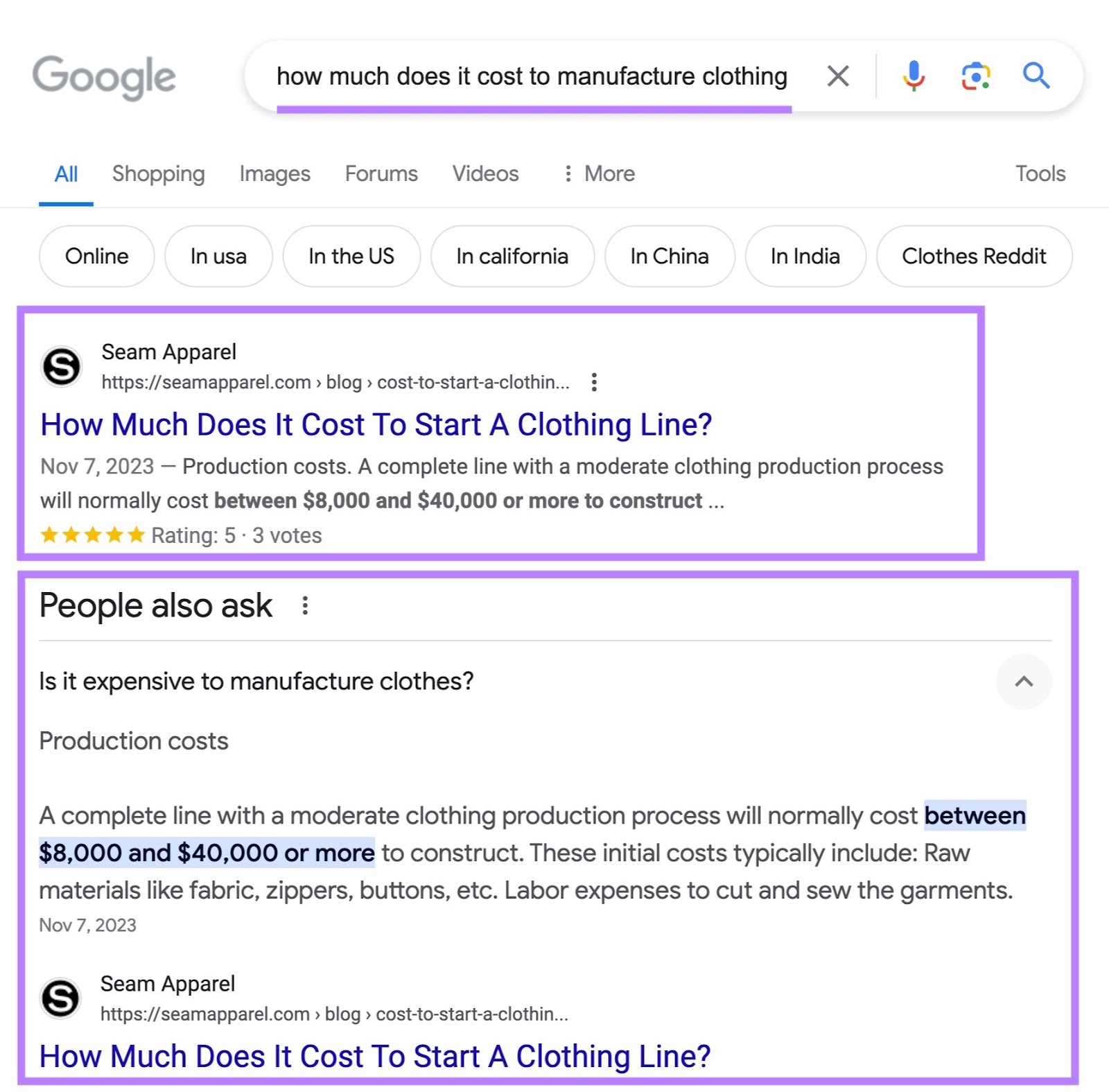
By creating and implementing a dedicated manufacturer SEO strategy, your webpages can show up for more search terms and phrases relevant to your industry.
Enhances Brand Authority
Creating SEO content that answers common questions about manufacturing topics can establish your brand as an industry authority.
And not only in the eyes of searchers.
Google values content that’s high in quality and created by trusted experts. Which is why Google’s Search Quality Raters use Experience, Expertise, Authoritativeness, and Trustworthiness (E-E-A-T) signals for evaluating websites that show in search results.
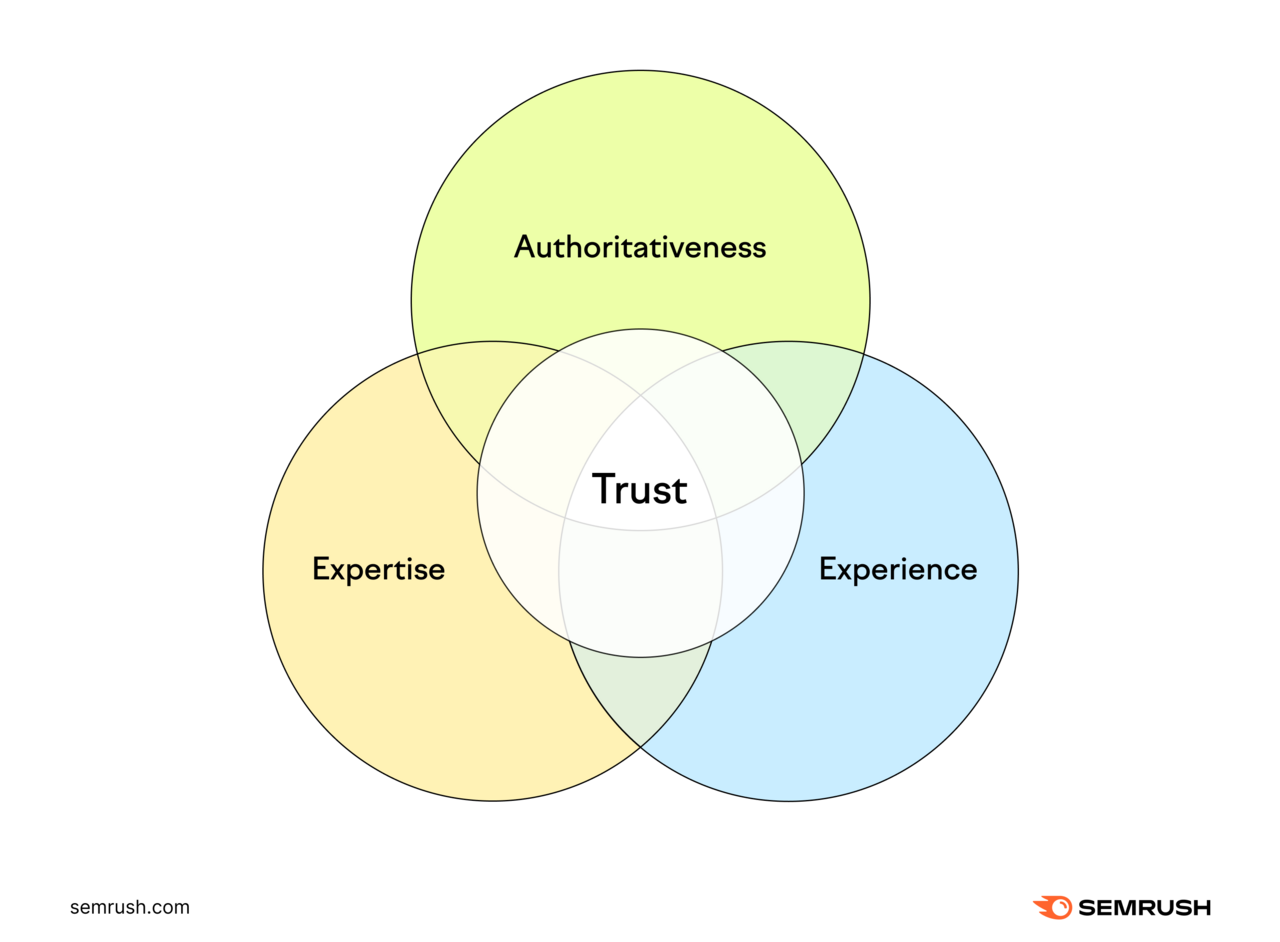
Keeps Marketing Costs Low
Unlike paid ads, clicks on organic search results are free. Which is why SEO is one of the more affordable digital marketing tactics available.
Your manufacturing business will likely use both paid and organic marketing channels.
But earning more leads organically can lower customer acquisition costs in the long term. And increase your return on investment (ROI).
SEO for Manufacturers: 9 Best Practices
Here’s an overview of SEO techniques (that rely on tools to analyze SERP and competitor data) to help you optimize your website:
1. Perform Keyword Research
Keyword research involves identifying relevant search terms that your target audience uses to search for products or services like yours.
Keywords can range from exact references to your offerings (“furniture manufacturer”) to questions that searchers may have when considering manufacturing services (“cost of manufacturing a [product]”).
Ideally, you should optimize every page on your website for a unique keyword (including relevant variations of that keyword). So you can maximize the number of keywords your site ranks for.
For example, O’Neal Manufacturing Services has a separate webpage for each of its manufacturing capabilities.
And each page provides an opportunity to target a different keyword. Like “steel fabrication” and “laser cutting.”
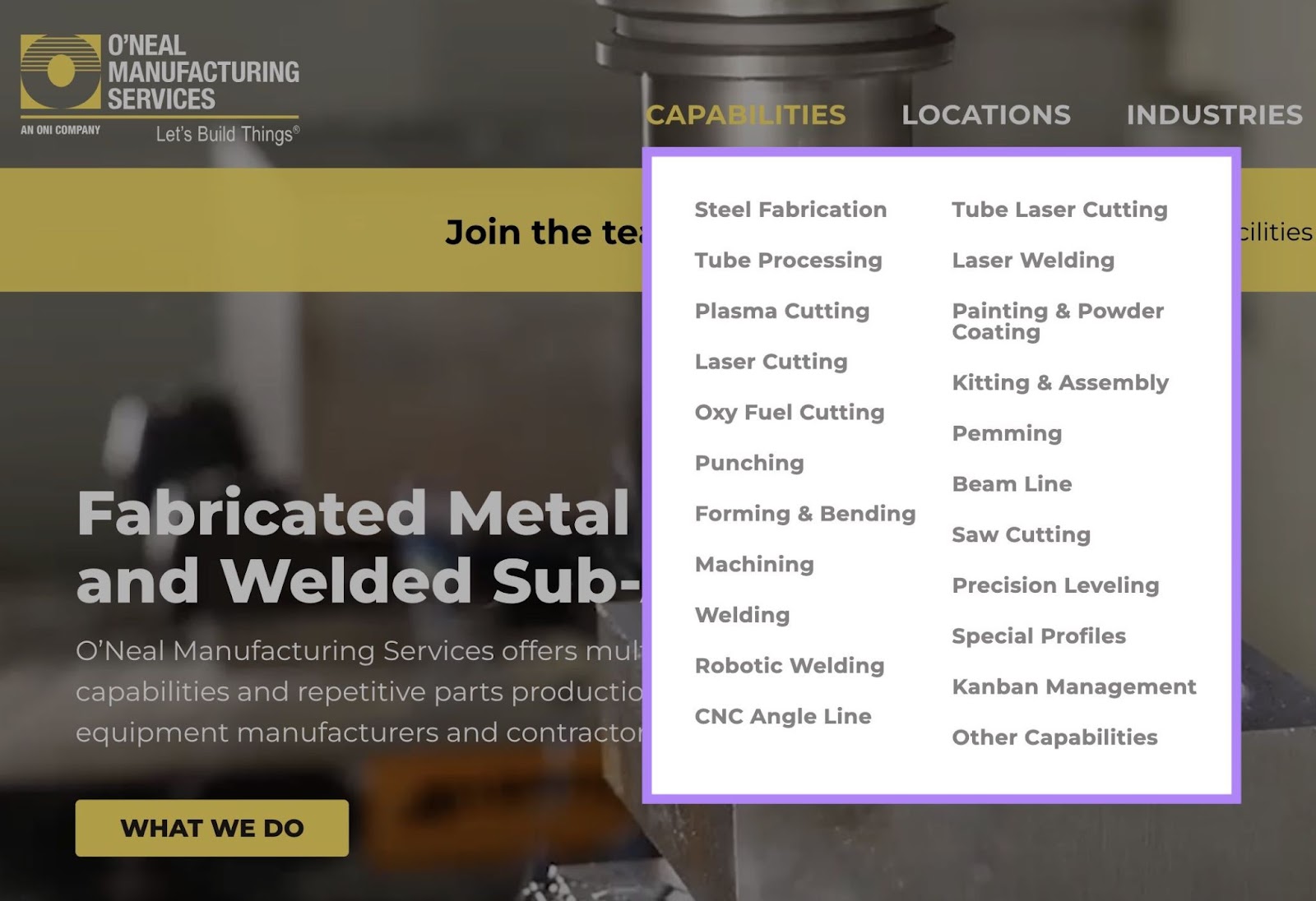
Use the Keyword Magic Tool to research terms.
Start by typing in a term related to your business, select your target country, and click “Search.”
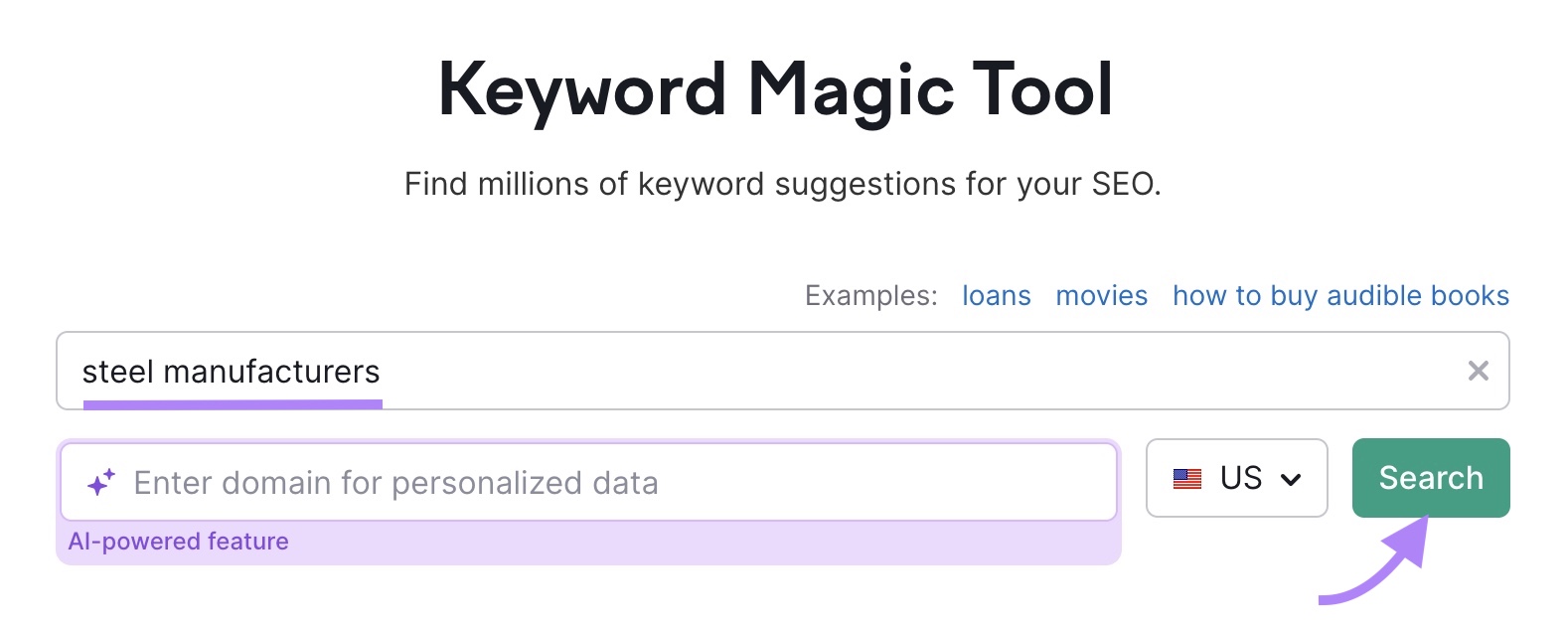
You’ll see a table of keywords related to your seed keyword. There are a few modifiers you can use to narrow your results. Like “Exact Match” and “Phrase Match.”
But the best place to start is the “Broad Match” modifier. Because it allows you to see long-tail keyword variations that are often less competitive (meaning easier to rank for).
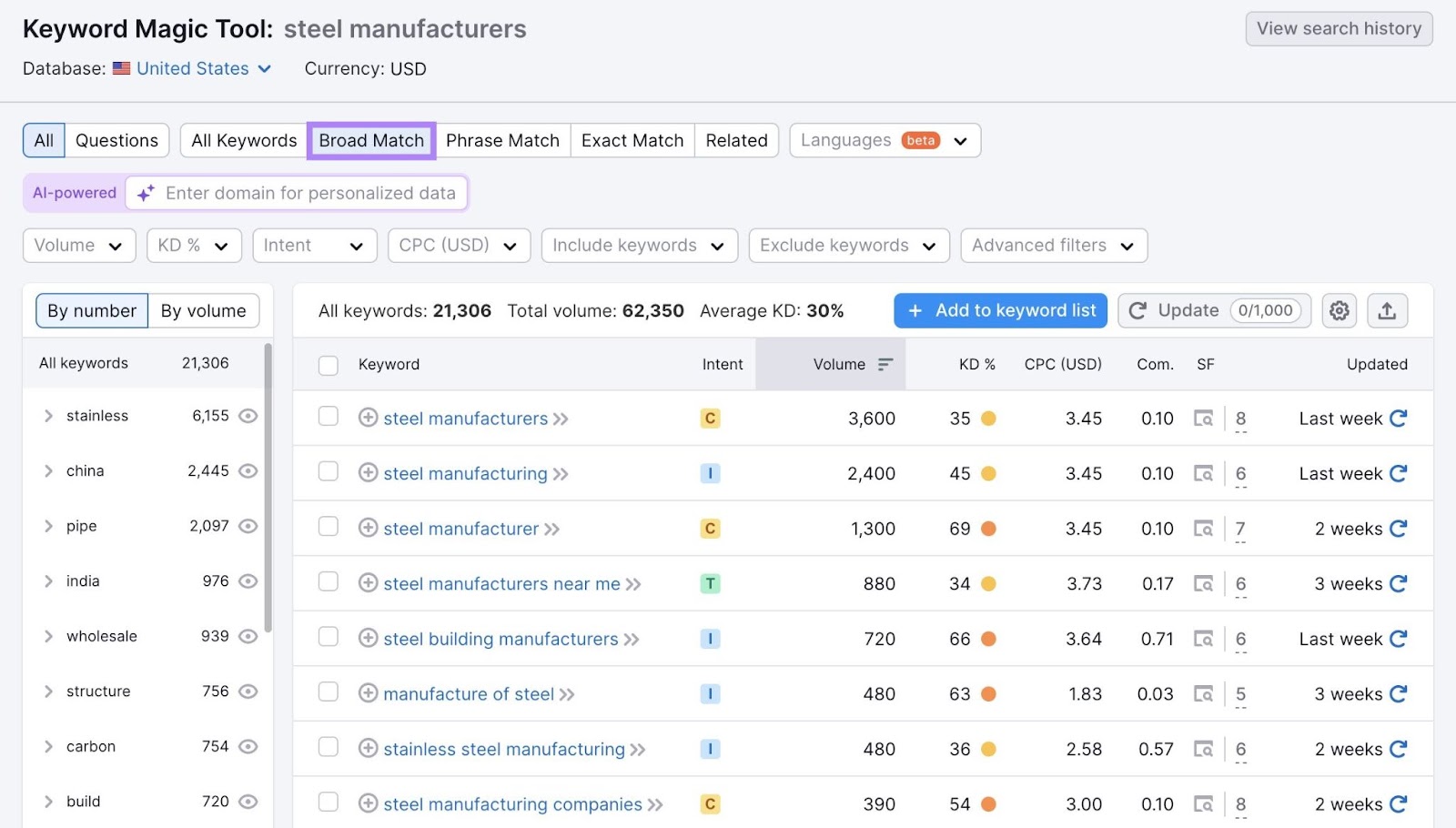
When choosing keywords, pay attention to the following columns:
- Search volume (“Volume”): The average number of searches the keyword gets each month. Ranking for keywords with higher search volumes can mean more eyes on your content.
- Keyword difficulty (“KD %”): How competitive a keyword is to rank for in the top ranking positions. The higher the number in this column, the more challenging the keyword is to rank for.
- Search intent (“Intent”):This is the true meaning behind a user’s query. Or what they want to accomplish.
- Cost per click (CPC):The average price advertisers pay for each click on their ad that’s triggered by that keyword. A high CPC can be an indication of a valuable search term.
Some manufacturing keywords may have low search volumes, but that doesn’t mean they aren’t valuable. Because they might indicate that searchers are motivated to take action.
For example, the keyword “tube laser cutting service” only gets 30 searches per month. But it has a high CPC of $13.34.
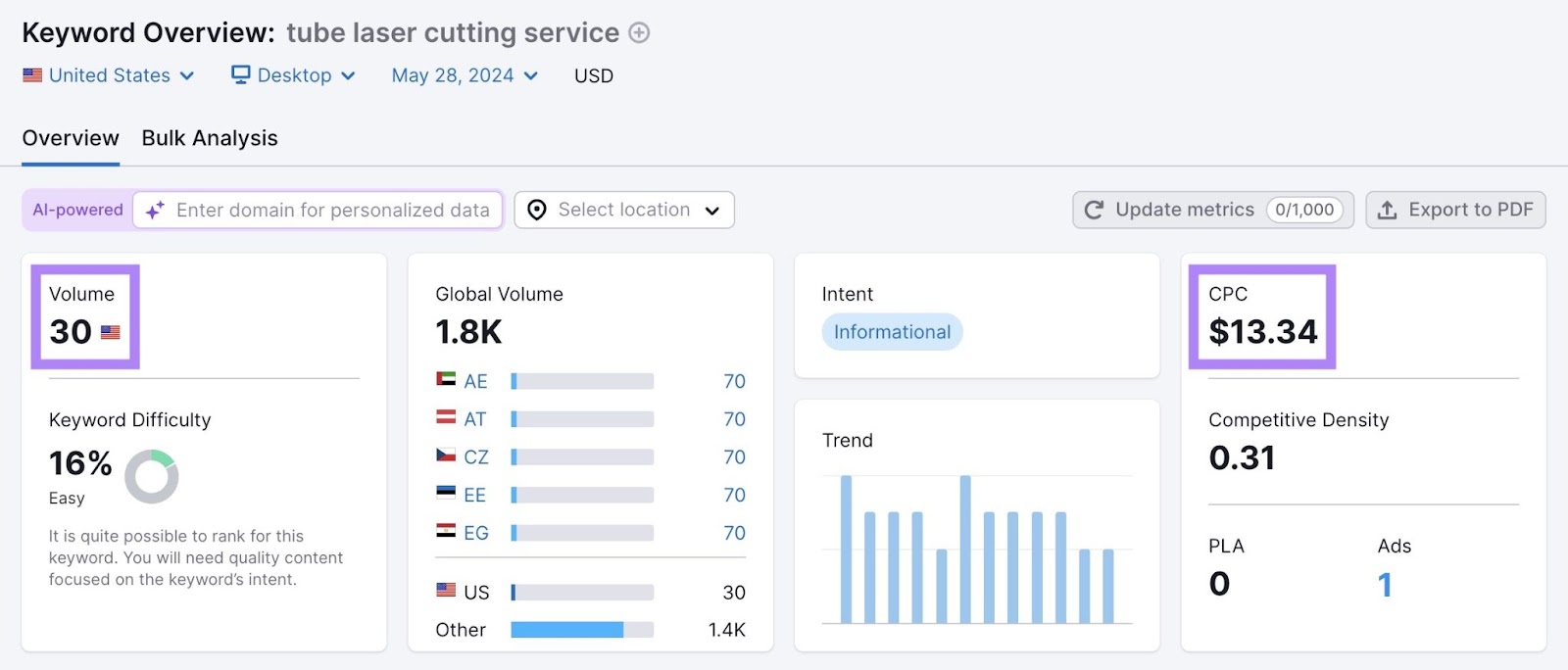
If advertisers are willing to pay that price, the keyword likely represents qualified audiences. Which means ranking for this keyword organically could be a great opportunity.
As you research, it’s best to add several keywords to a list to reference later on.
To do so, click the box to the left of a keyword (you can select multiple keywords at once). Then, click “+ Add to keyword list.”
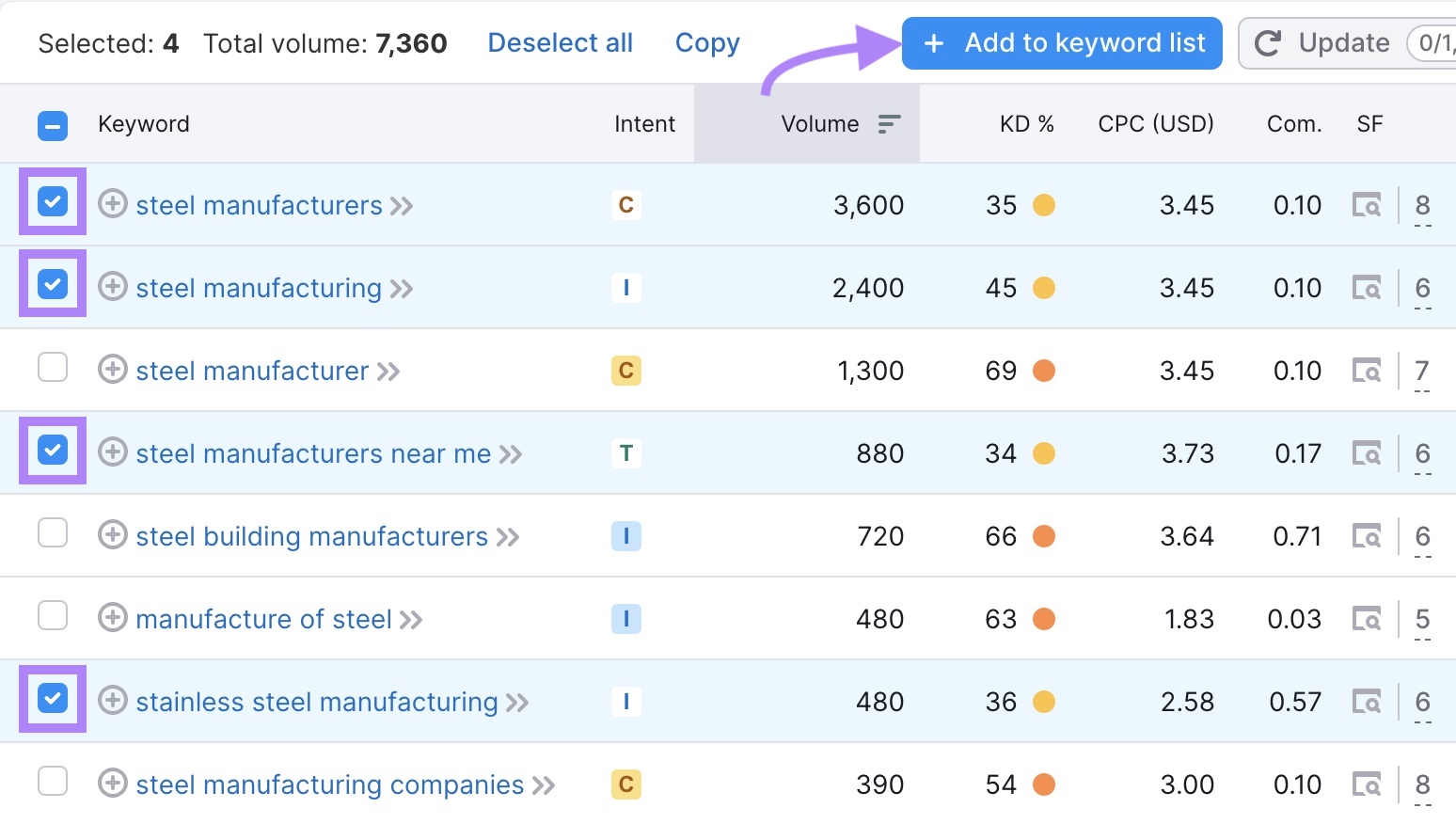
To create a new list, click “Create new empty list.”
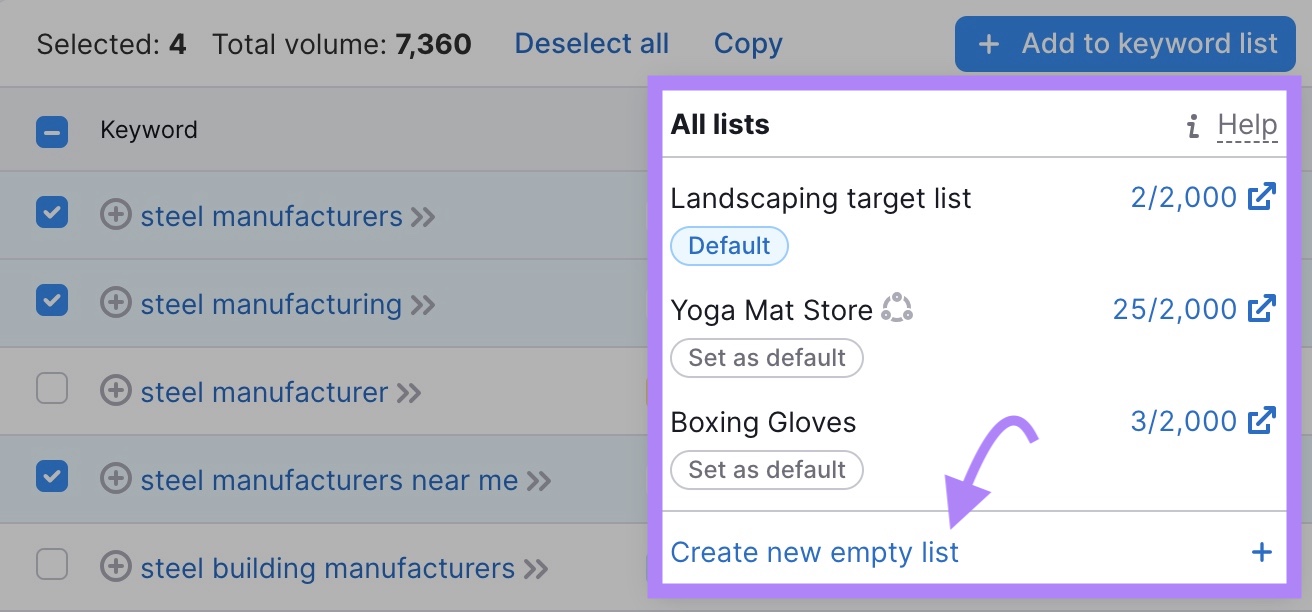
Next, give the list a name. Then, click the checkmark to create the list. This will also add the selected keywords to the list.
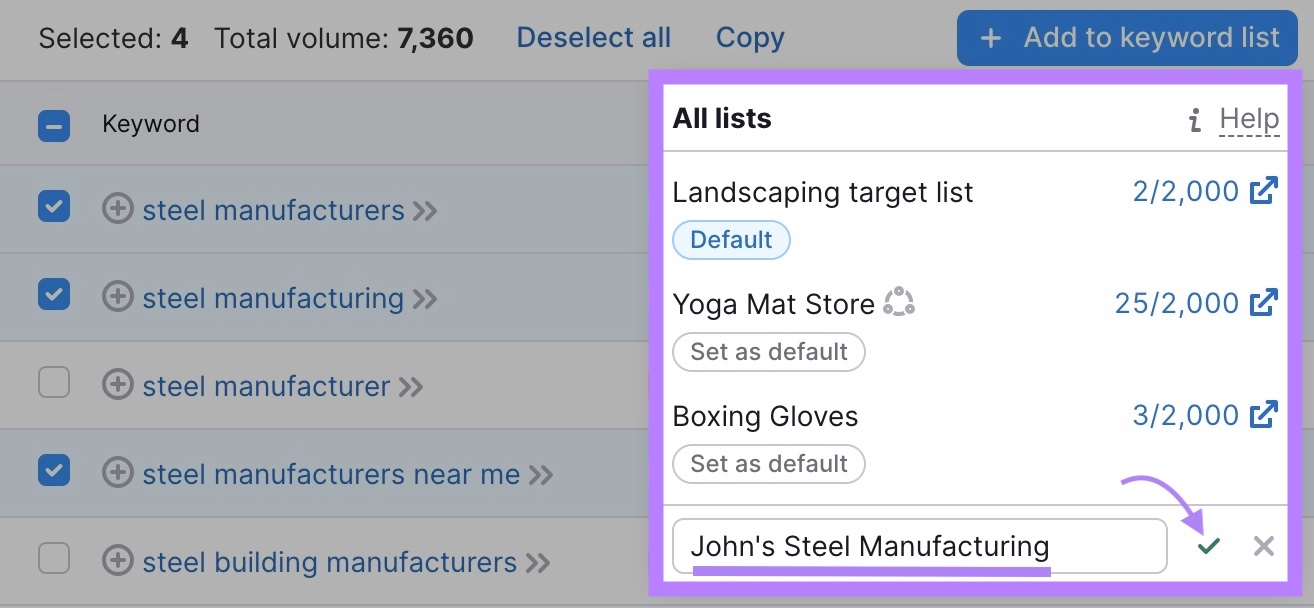
Each keyword you add to your list provides a new opportunity to reach your target audience. If you create informative, helpful content that meets the search intent of the keyword.
2. Understand Search Intent
Search intent refers to what searchers are actually looking for when using a keyword. Which can help you create relevant content that’s more likely to show in search results.
For example, searchers might want to get specific information about a manufacturing process. Or they may be ready to purchase manufacturing services.
Search intent is separated into four primary categories. Here’s an overview of each:
- Informational: Users who want information or answers to their questions
- Navigational: Users who are looking for a particular website or business
- Commercial: Users who are researching products or services
- Transactional: Users who want to make a purchase
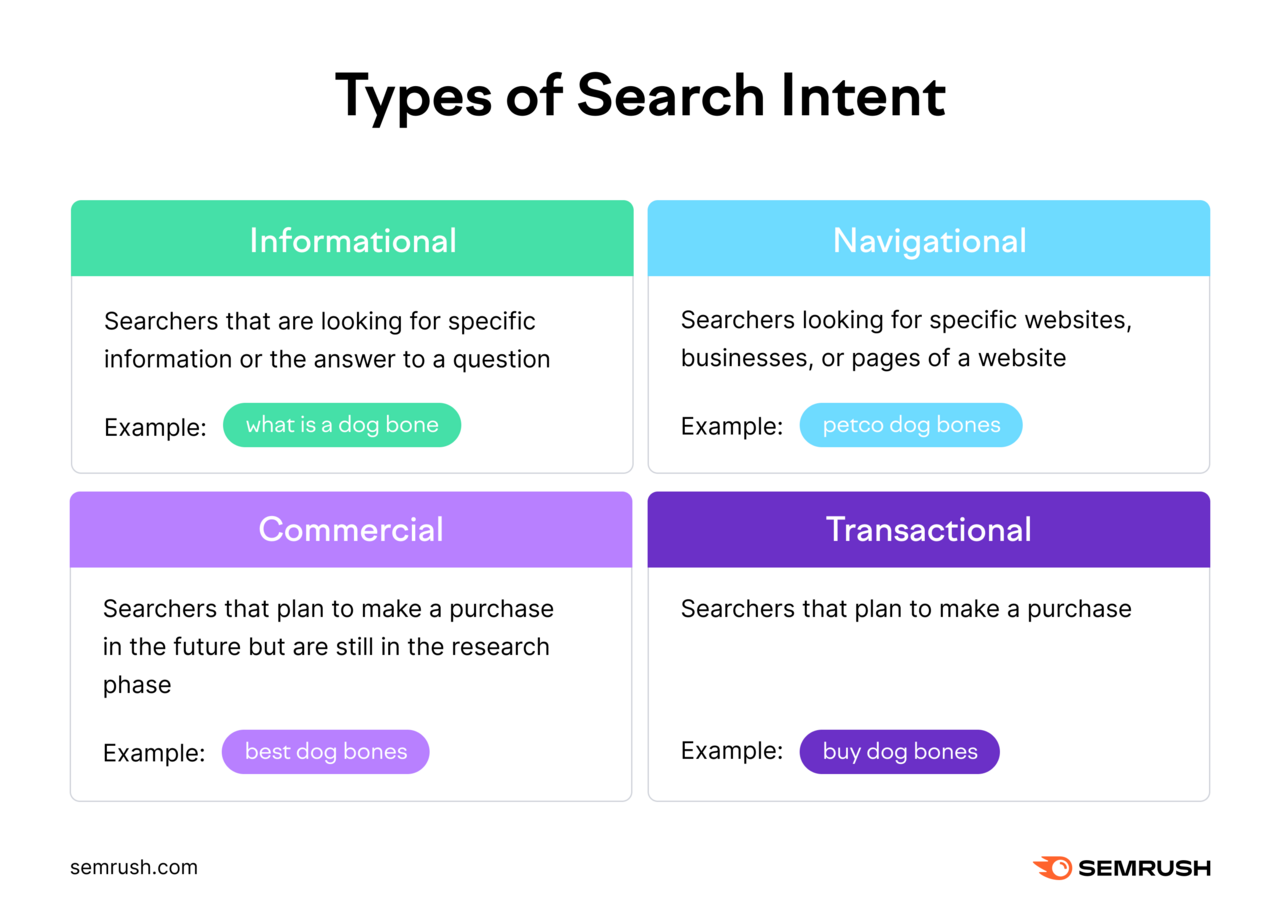
Knowing the search intent of a keyword can help you create content that meets the user’s needs.
Use the Keyword Magic Tool or Keyword Overview to find search intent.
In Keyword Overview, type your keyword into the text box, select your target location, and click “Search.”
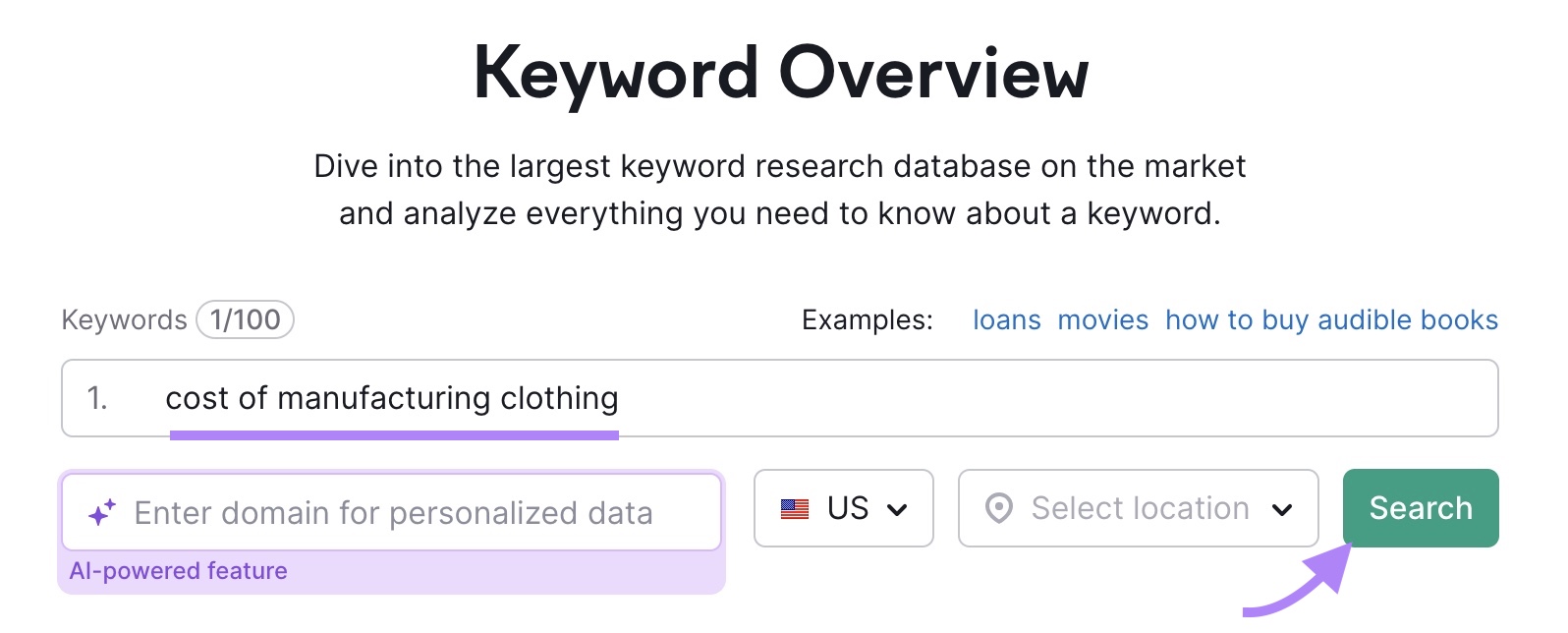
Look for the box labeled “Intent” to see the keyword’s search intent.
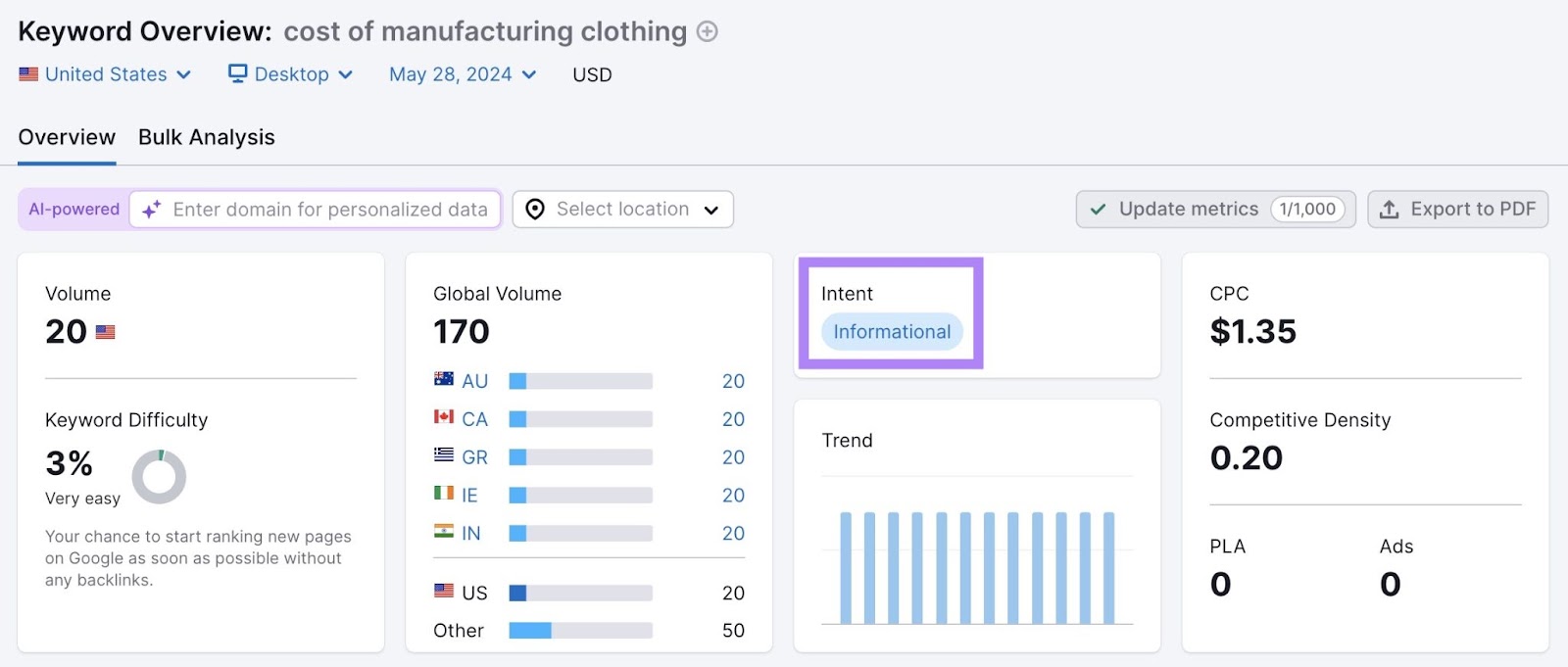
The keyword “cost of manufacturing clothing” is informational. Which means users are looking for more information about how much clothing manufacturing costs.
Optimizing a service page for this keyword wouldn’t be useful. Google is unlikely to rank a service page for this term because users aren’t ready to purchase yet—they’re still in the research phase.
But a blog post that breaks down clothing manufacturing costs and explains it thoroughly has more potential to rank for this keyword.
Like this article from Canadian clothing manufacturer Gabe Clothing.
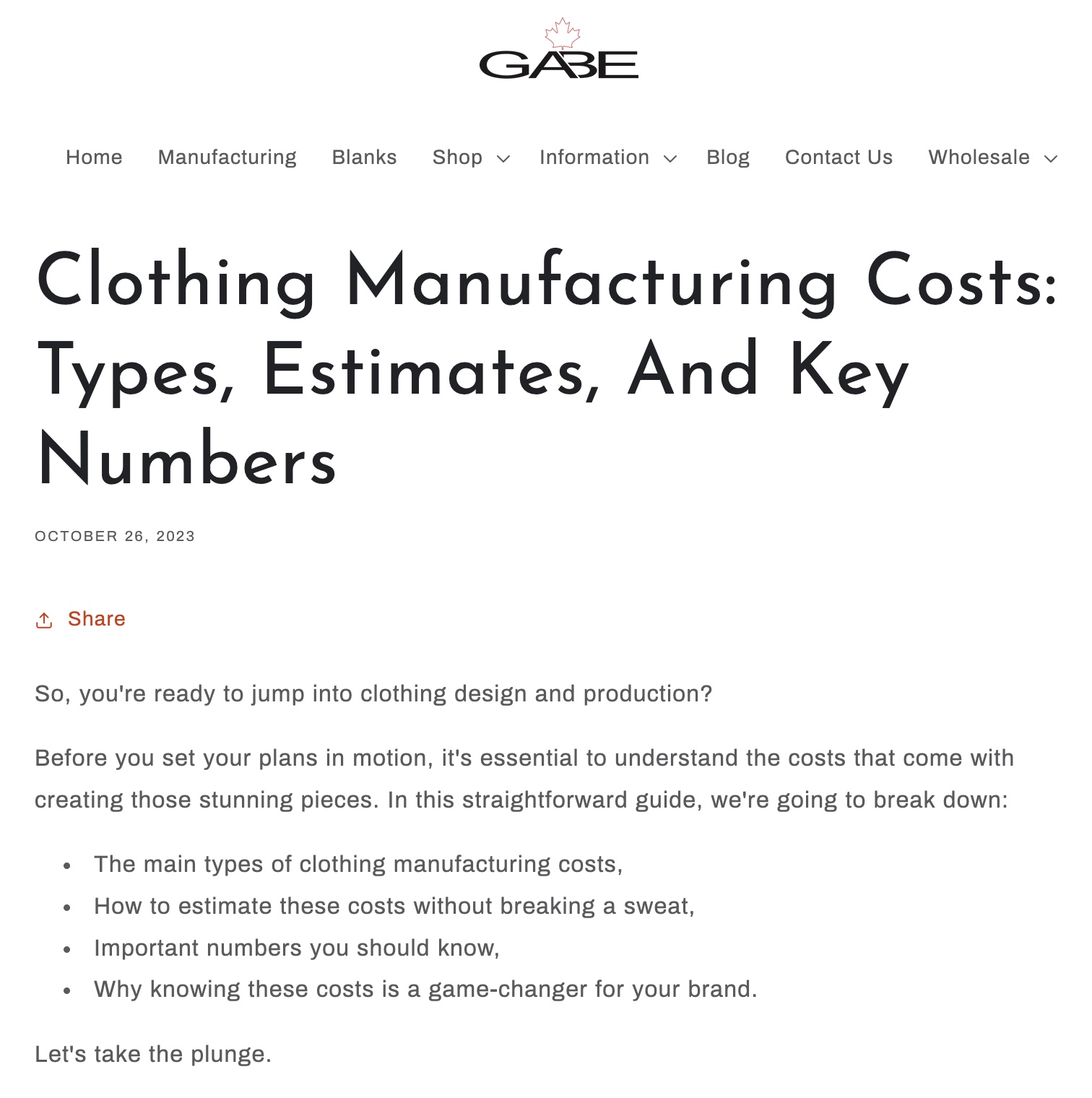
Make sure to evaluate intent for each of the keywords you identified previously. So you know how to use them on your website.
Then, you can move on to content creation.
3. Create Useful Content
High-quality content that’s informative and useful content is more likely to rank in top positions for your target keywords. And that goes for landing pages, product/service pages, case studies, blog posts, etc.
For example, electronics manufacturing company Celestica regularly publishes informative articles about manufacturing supply chains.
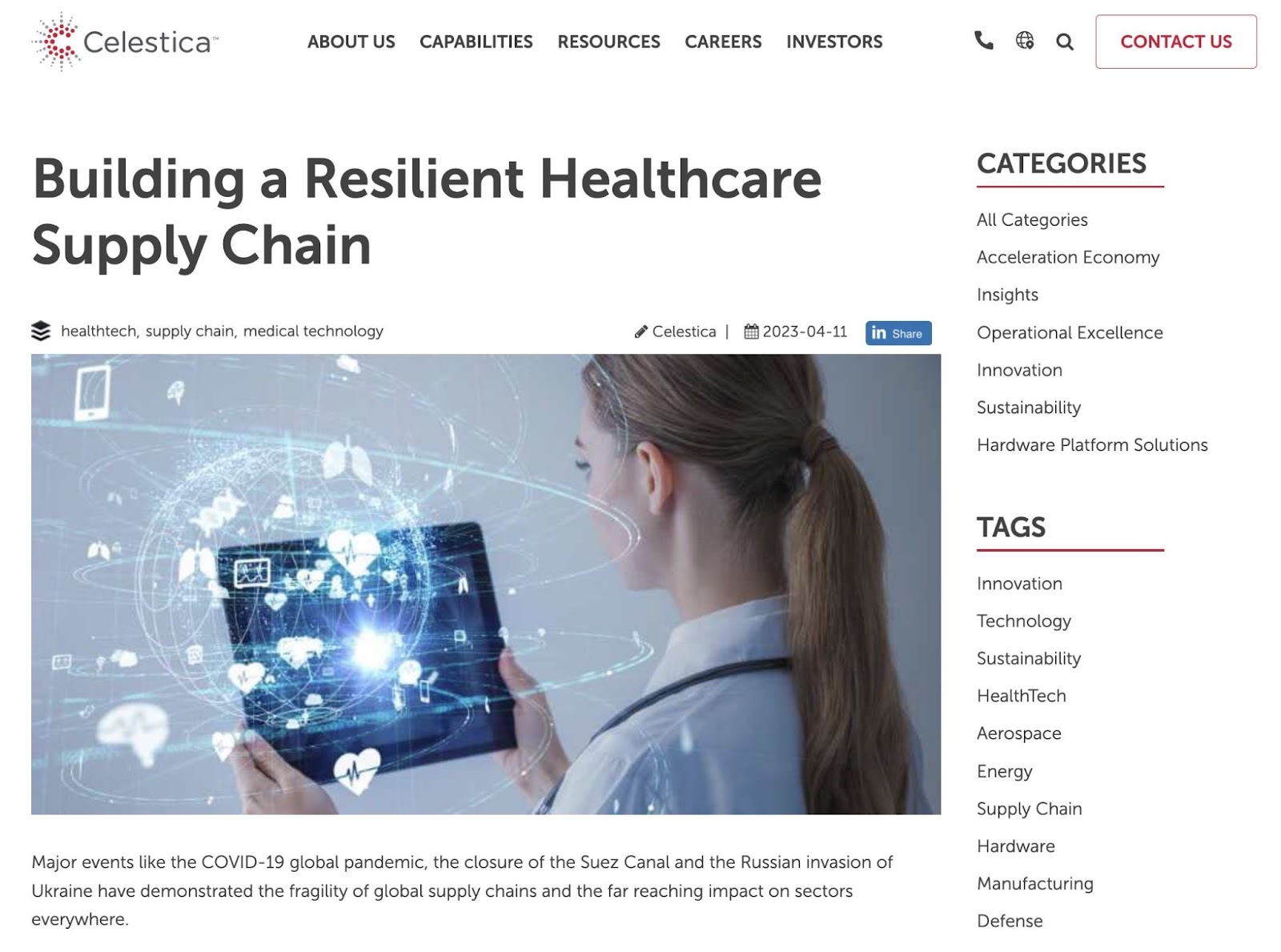
When creating content, note that Google looks for the following quality signals on webpages:
- Includes original research, reporting, or analysis
- Is relevant to the user’s search intent
- Aligns with the website’s primary topic areas
- Includes up-to-**** and accurate information
- Offers original thoughts and ideas (does more than reiterate competitor content)
- Includes links to relevant, authoritative sources
- Is free of spelling and grammar errors
Remember, the more content you create, the more opportunities you have to connect with your target audience.
So, consider creating a content calendar to stay organized and maintain a consistent publishing schedule.
4. Apply On-Page SEO
On-page SEO is the process of optimizing the webpages to help them rank better. And involves adding keywords, incorporating internal links, using logical URL slugs, and more.
Use a tool like our On Page SEO Checker to confirm that your pages follow on-page SEO best practices.
Start by entering your domain and clicking “Get ideas.”

Choose your target country, add the pages you want to get ideas for along with their target keywords, and click “Collect ideas.”
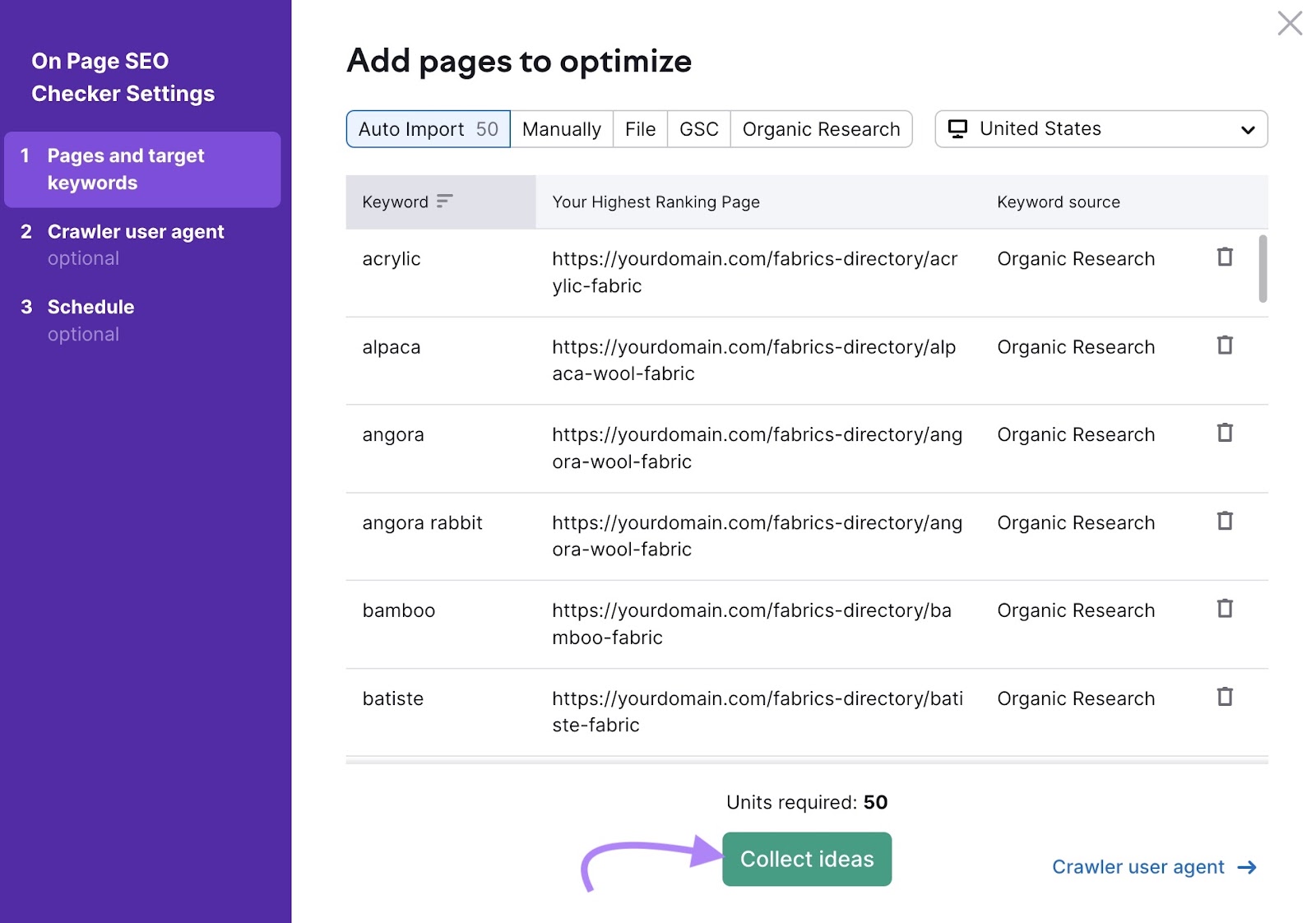
You’ll get a list of potential categories for improving your SEO to go through. We’re starting by clicking on the blue number next to “Content Ideas.”
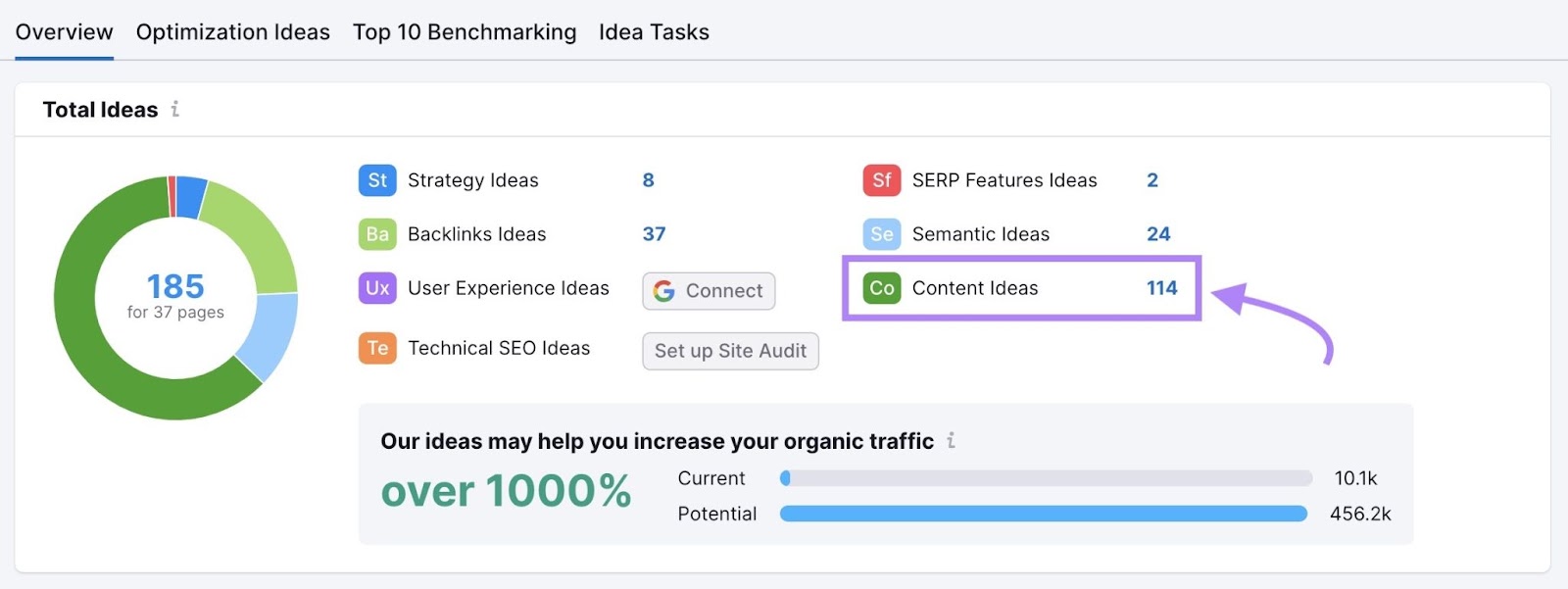
You’ll see a table with pages organized by priority.
Click on “# ideas” in the “Content” column.
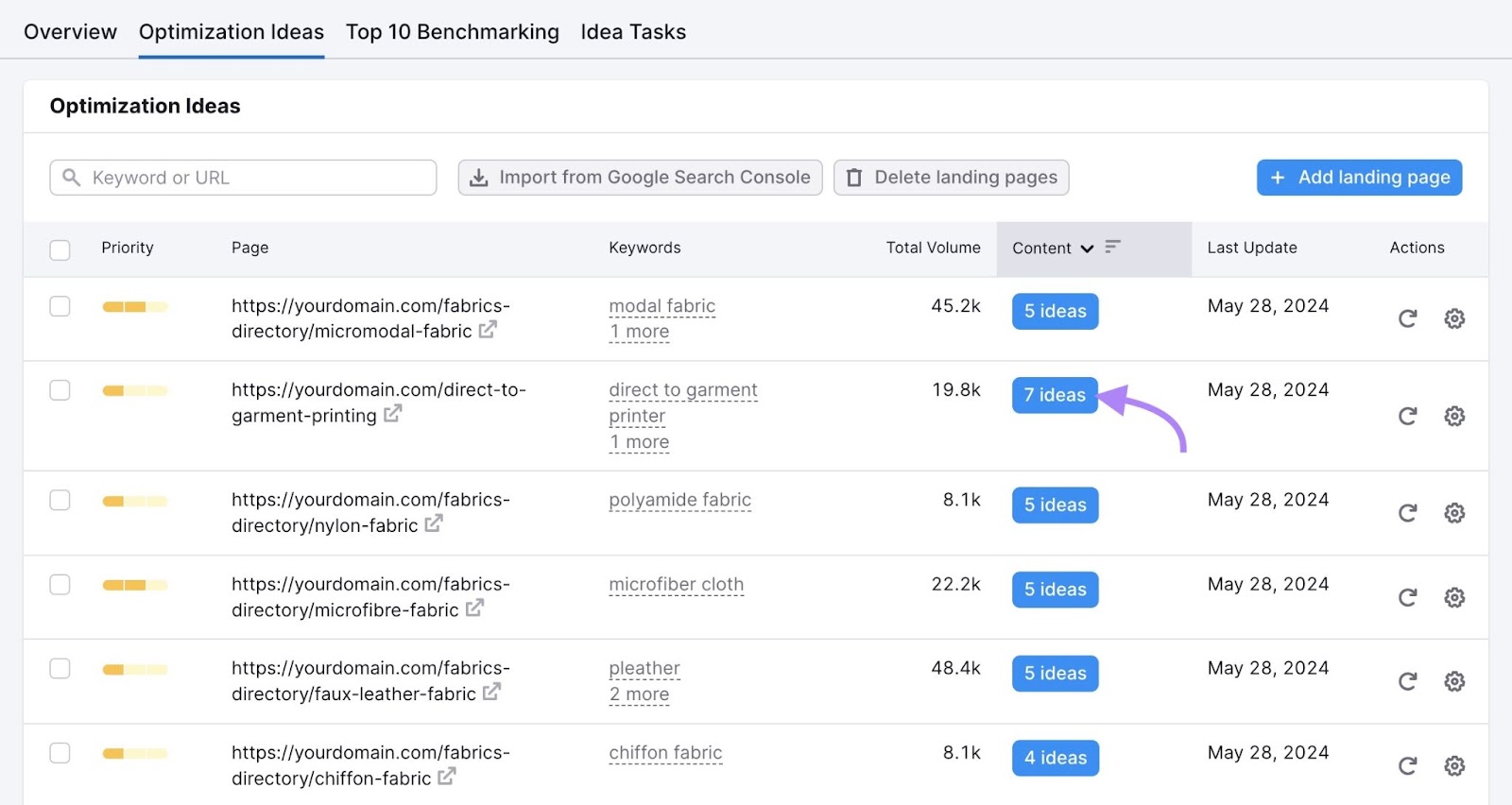
If the tool detects any issues with your content, it will recommend changes. Such as:
- Improving readability
- Creating more detailed content
- Enriching your content with semantically related keywords
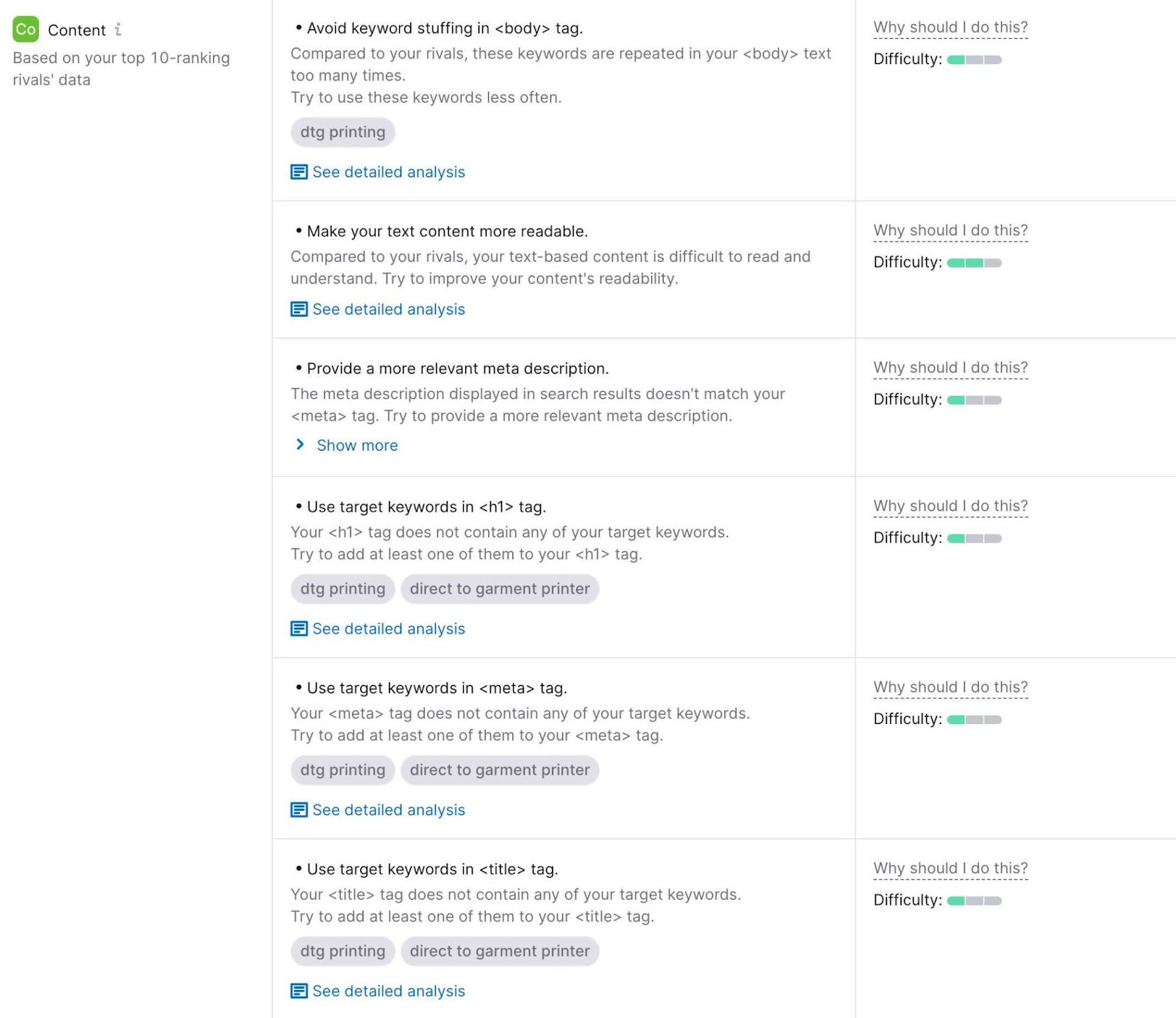
Follow the recommendations in the list to improve your on-page SEO. And repeat the process for each page of your website that you want to rank.
Now, let’s go over some of the most important on-page elements you need to optimize in more detail:
Title Tags
Google may use a webpage’s title tag (which signifies the page title) as the blue, clickable hyperlink of your SERP result.
Title tags should be 50 to 60 characters long to avoid truncation. And include the keyword you want the page to rank for.
For example, manufacturing company Accurate Metal Products includes “plasma cutting services” in this title tag.

Meta Descriptions
A meta description briefly summarizes what a page is about. And it can display under the title in search results.
It should be around 105 characters long. And give users more information about the page’s content.
You should also include your target keyword (or a variation) in the meta description and include a call to action (CTA) that entices users to click through to the page.
For example, custom parts manufacturer eMachineShop includes the keyword “plasma cutting services” in its meta description. Along with enticing details to encourage clicks:

Heading Tags
Heading tags define headings and subheadings on your pages to create a structure for your content.
Each page should have only one H1 tag (this is the page’s headline or title). It should be the same as the title tag or closely related so Google isn’t confused about the content.
Use H2 through H6 tags to indicate the main sections. And include related keywords or subtopics in them.
For example, manufacturing and fabrication shop Plasma Cutting Services uses keywords related to “plasma cutting” in H2s on its webpages.
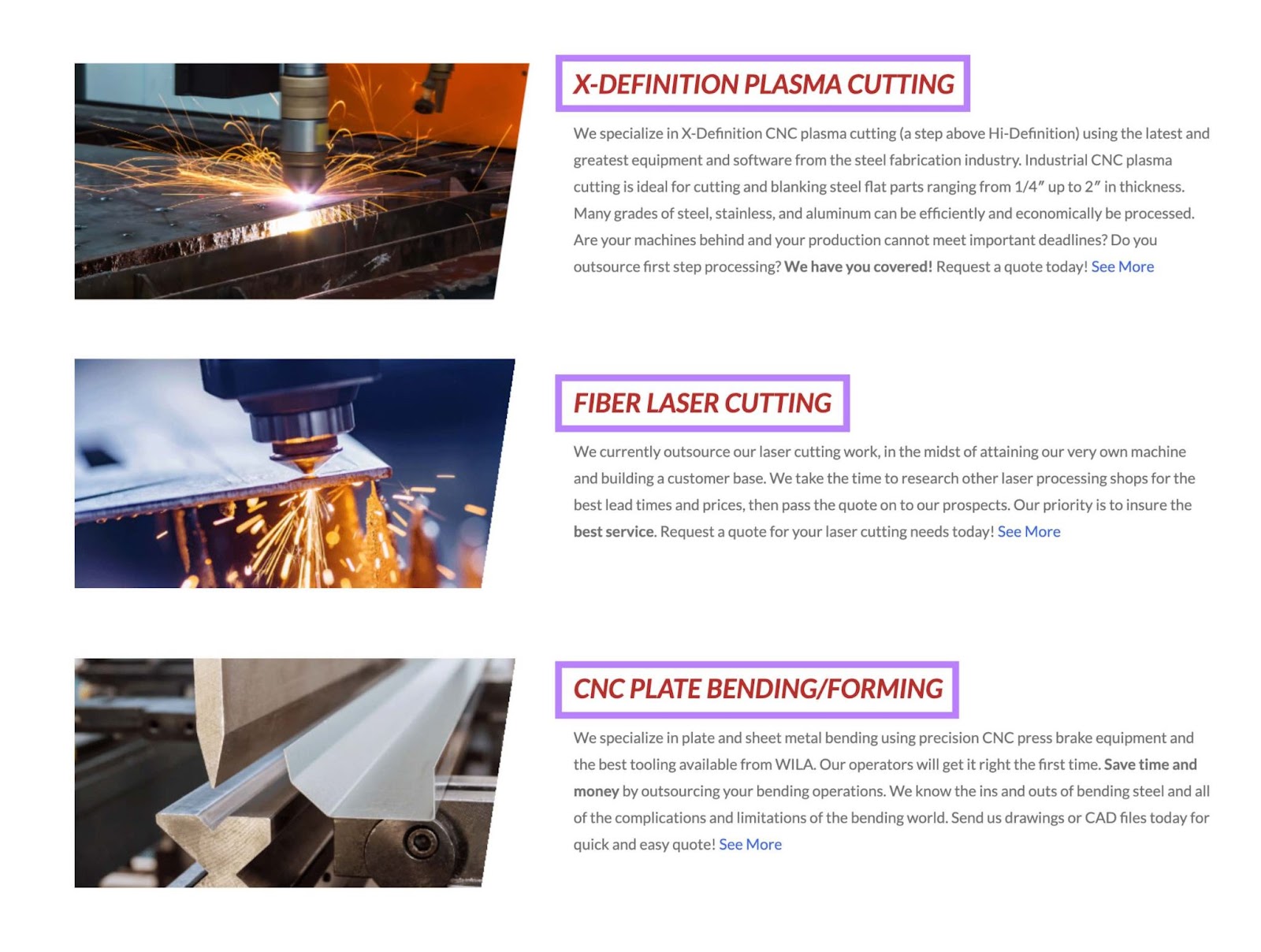
URL Slug
URL slugs are the end portion of your pages’ URLs. And adding keywords to them can help Google and users understand the content on each page.
It’s also best to keep them short. And to make the language as logical as you can.
Internal Links
Internal links are links that point to other pages on your site. They can help Google discover new pages, show the relationship between your pages, and help users navigate your site.
For example, Lincoln Electric has a pillar page for plasma cutting fundamentals. Which internally links to relevant pages about plasma cutting on their website.
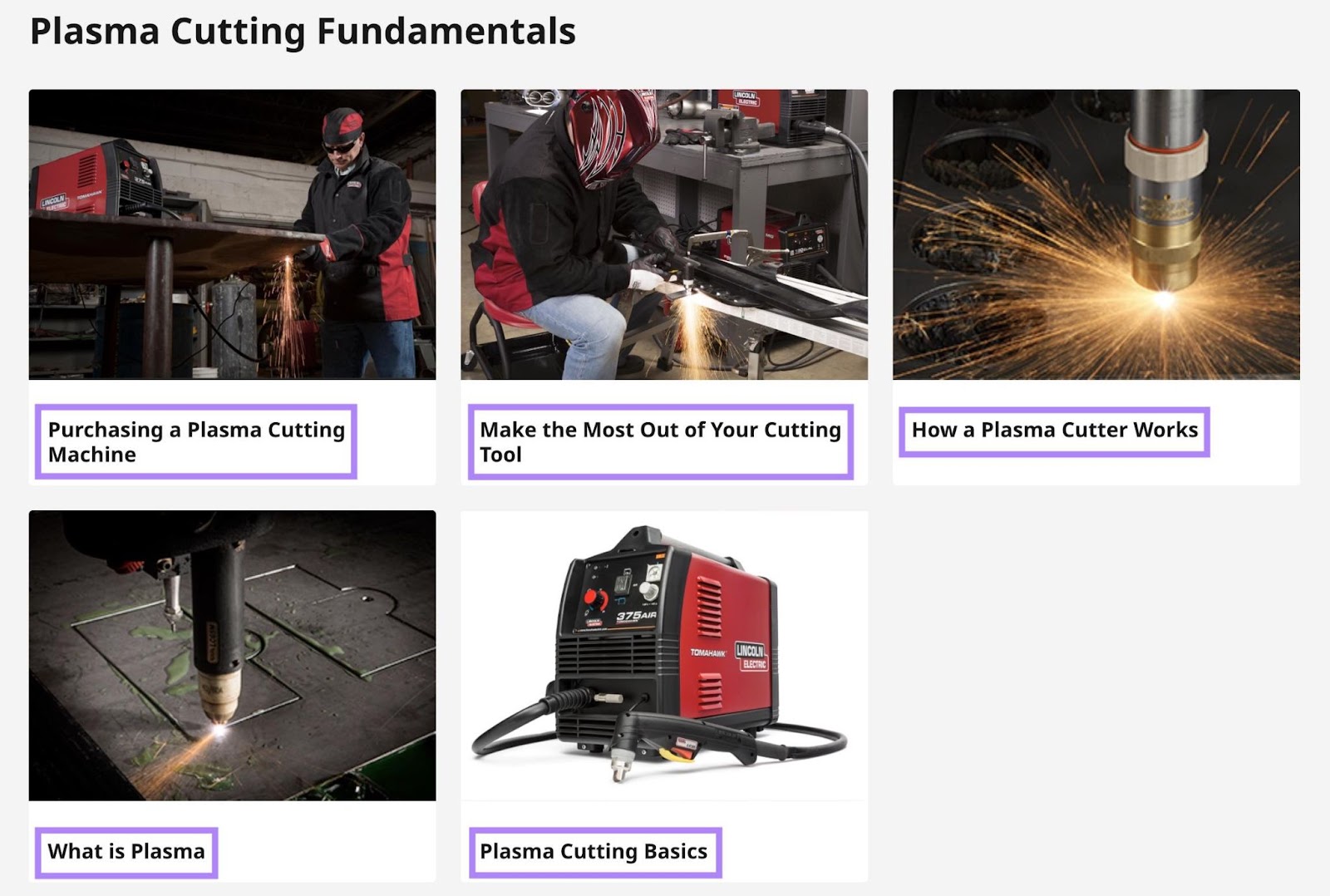
When adding internal links, follow these best practices:
- Only link to relevant pages
- Use anchor text that describes the content of the linked page
- Don’t overdo it when adding links to body copy—too many links can affect readability and look spammy
5. Ensure Your Site Is Crawlable
Google needs to be able to crawl (find) your pages before it can index (store in a database) them, so they can be ranked for relevant manufacturing keywords.
Adding internal links is a good way to ensure crawlability, but many factors can impact the crawlability of your website.
To ensure your website can be crawled and later indexed, use our Site Audit tool.
Enter your URL into the text box and click “Start Audit.”

You’ll need to configure your settings.
Then, click “Start Site Audit.”
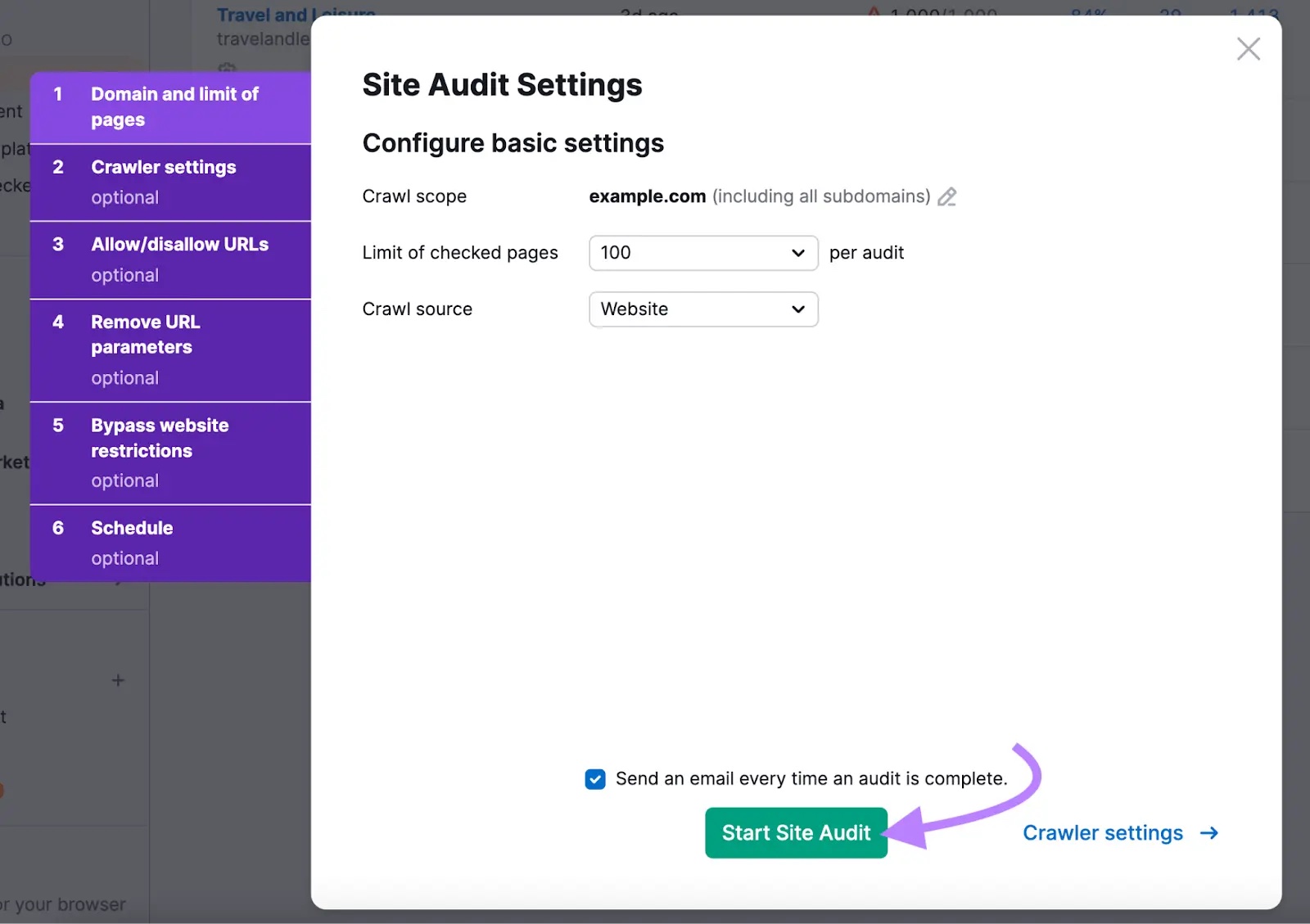
When your audit is complete, you’ll be notified via email.
It will also populate in your list of projects in the Site Audit tool. Click on your domain name to view the audit.
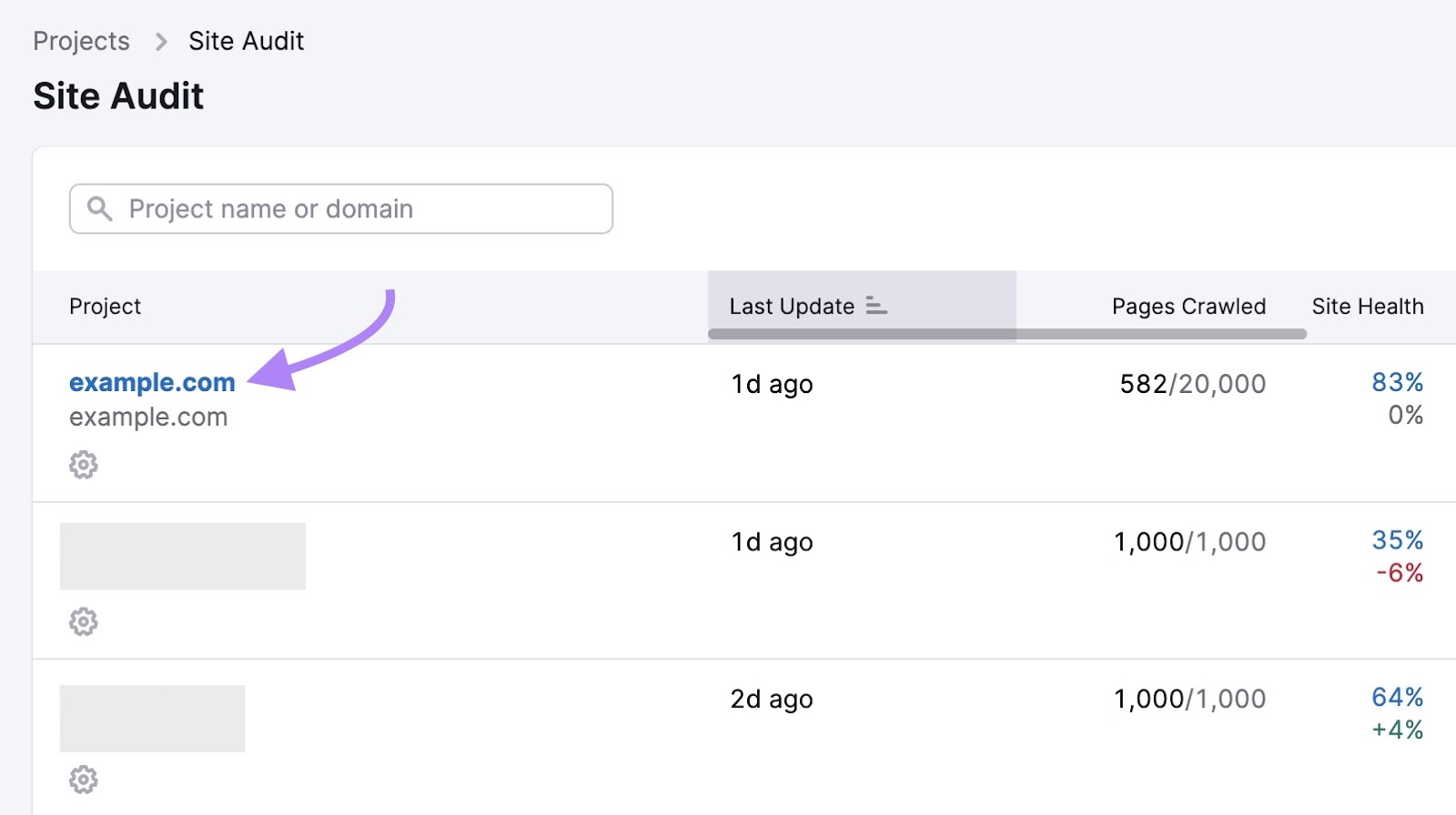
In the “Overview” report, look for the section labeled “Crawlability.” You’ll see a percentage that indicates how effectively your pages can be crawled.
Click “View details” to see any specific crawling issues in more detail.
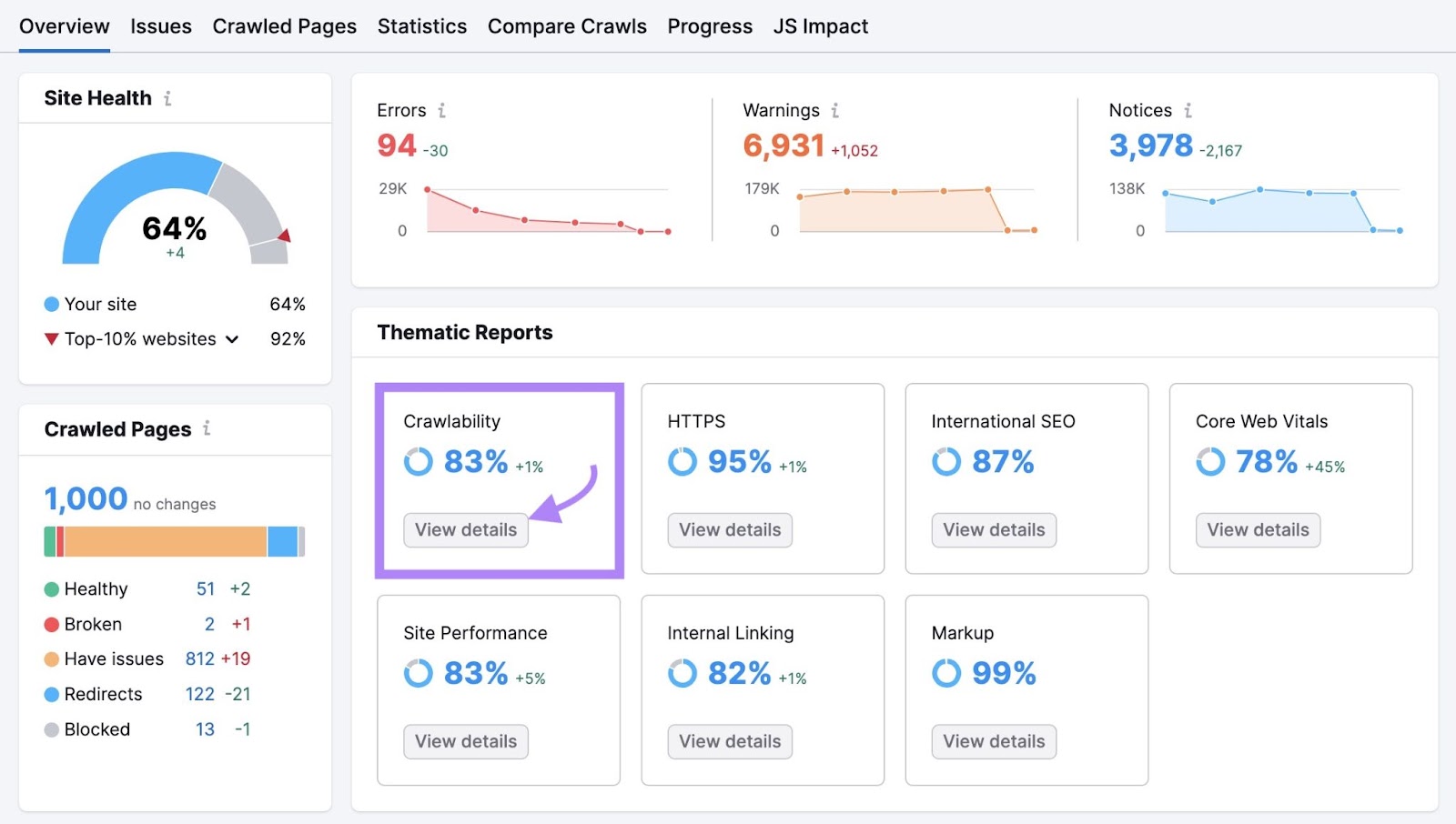
View the “Crawl Budget Waste” report section.
This shows factors that impact your crawl budget (the time and resources search engine bots devote to crawling your site before moving on.) And those issues can prevent search engine crawlers from discovering all your important pages.
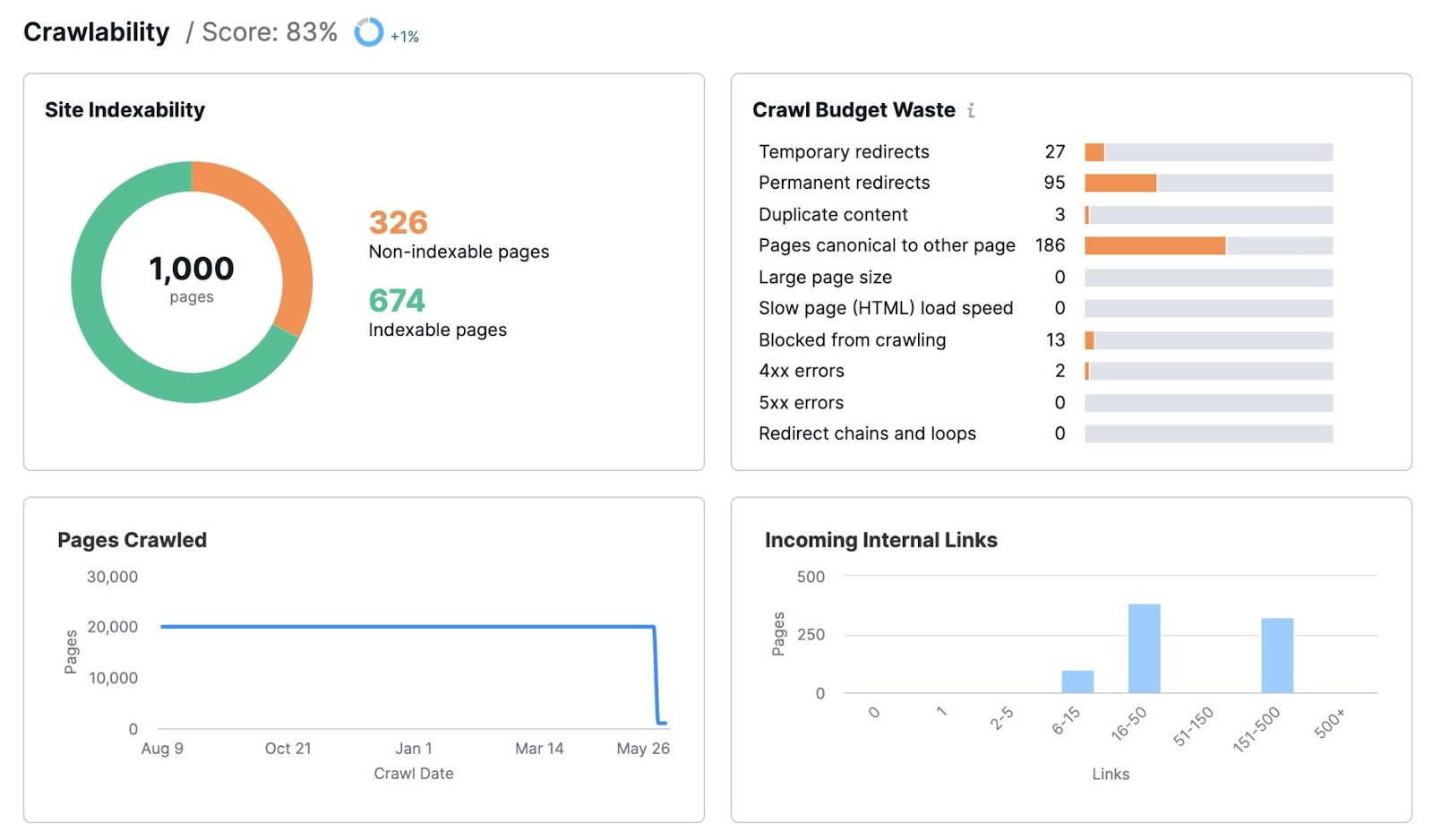
Make the changes recommended in this section to resolve potential crawlability issues.
6. Make Your Site Mobile-Friendly
Google uses mobile-first indexing—meaning it prioritizes the mobile version of your site. So, your industrial website should be mobile-friendly to increase your chances of ranking.
There are a few tactics you can use to ensure a mobile-friendly website, but we recommend using a responsive design. That means your website adapts to the user’s device (e.g., desktop, mobile, or tablet).
And follow these mobile-friendly best practices for your manufacturing site:
- Use short paragraphs and sufficient white space.
- Include structured data (code that provides more information about your pages)
- Optimize your site speed
Further reading: The Complete Guide to Mobile SEO: 8 Tips & Best Practices
7. Earn Backlinks from Reputable Sites
Backlinks are links to your website from other websites. And they can improve rankings because they show your website is trusted by other sites in your industry.
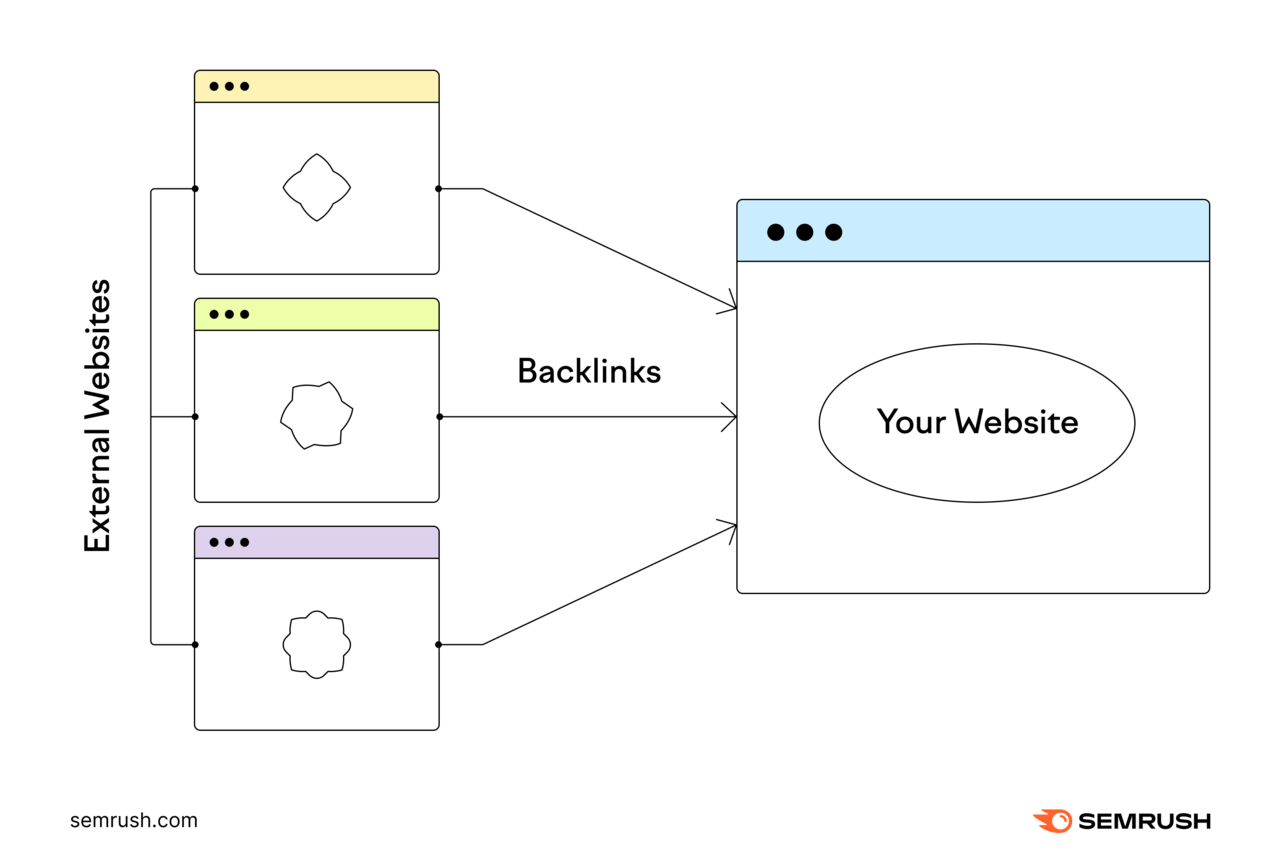
Increasing the number of high-quality backlinks to your site can improve its overall authority and ranking potential.
A high-quality backlink has the following qualities:
- Comes from a trusted, reputable website that has industry relevance to yours
- Uses anchor text that’s relevant to the content on the linked page
- Is included naturally on the page
To get more backlinks, use our Link Building Tool.
Enter your domain name in the text box. Then, click “Start Link Building.”
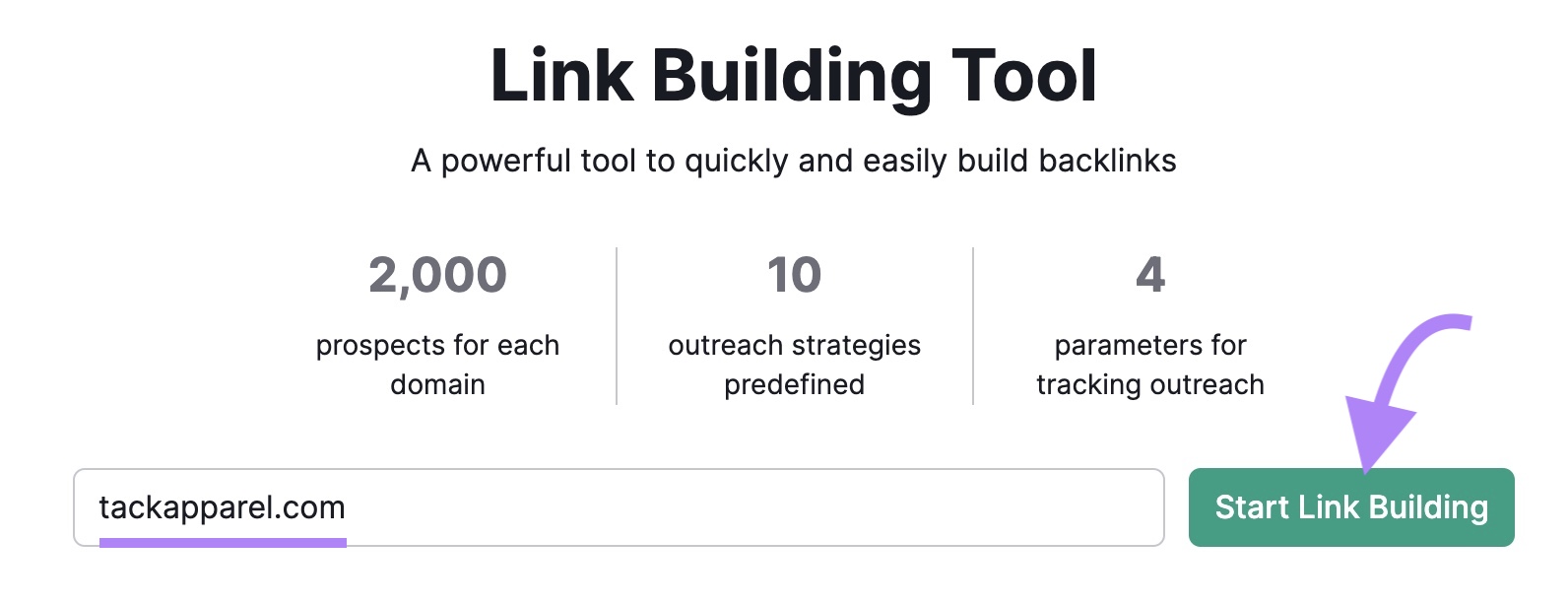
Next, you’ll be asked to provide some additional information about your website. So the tool can recommend the most relevant prospects for link building.
Start by entering the manufacturing keywords you want your website to rank for.
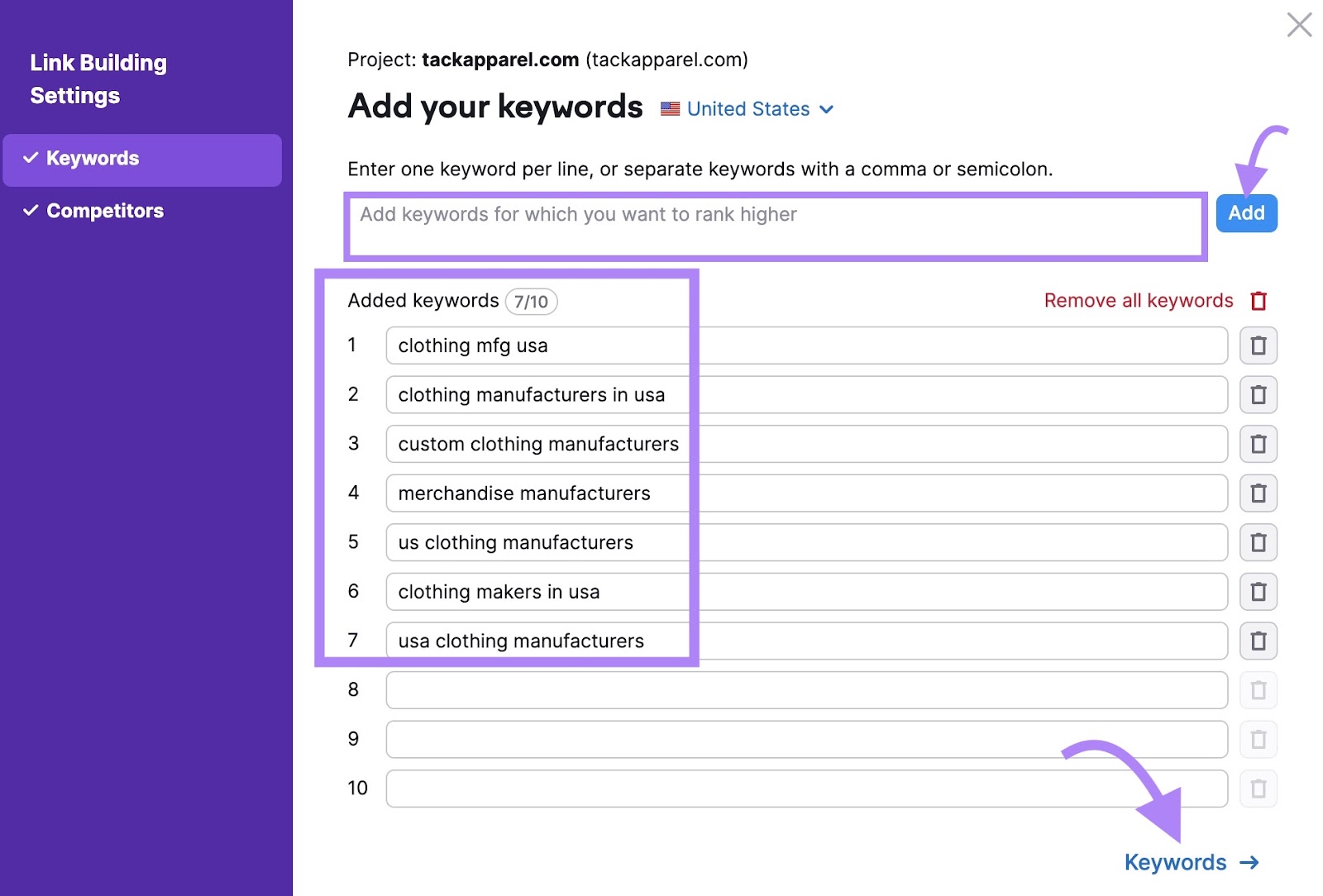
Next, add competitors. Then, click “Start Link Building.”
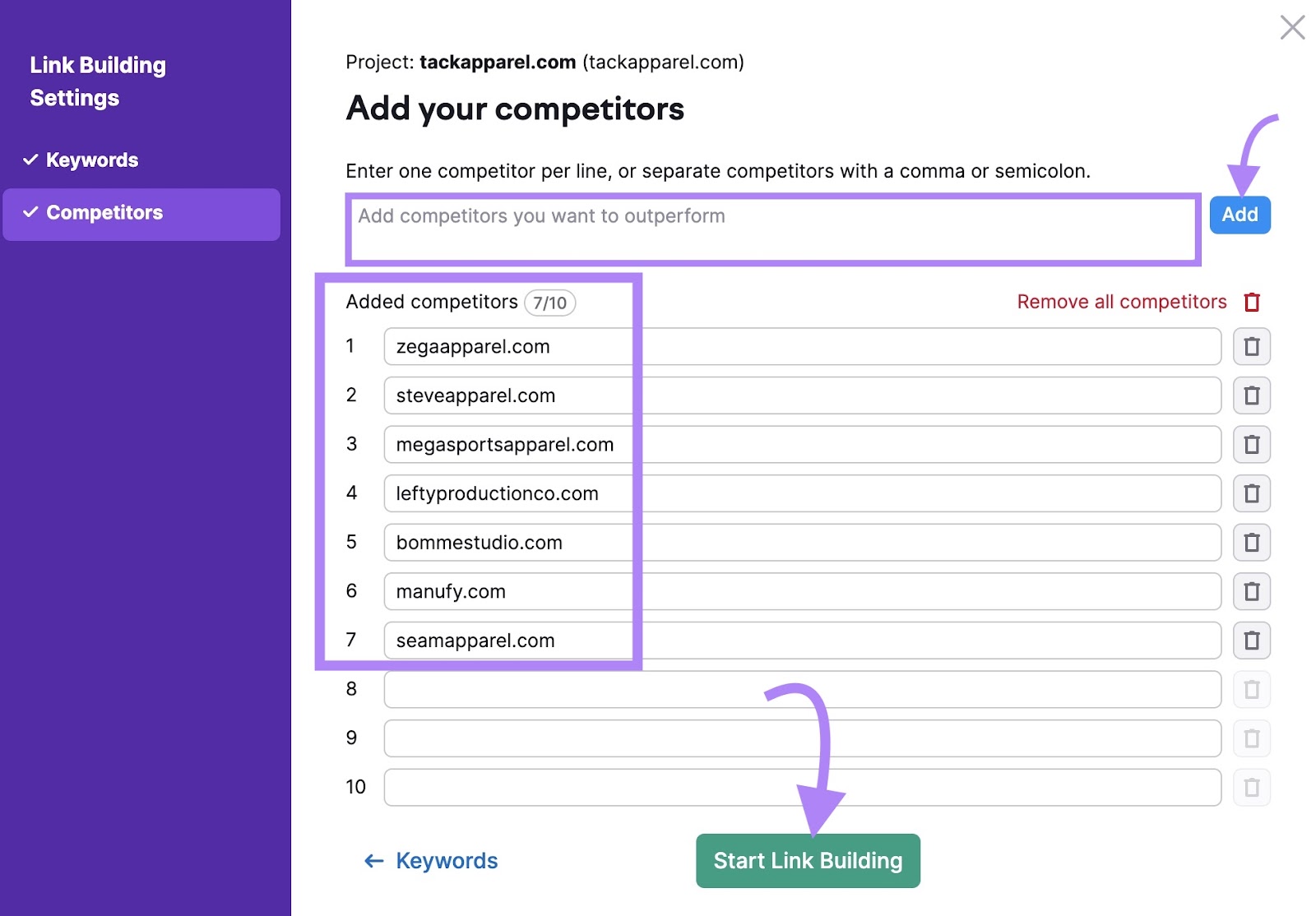
When the report is ready, click “View prospects.”
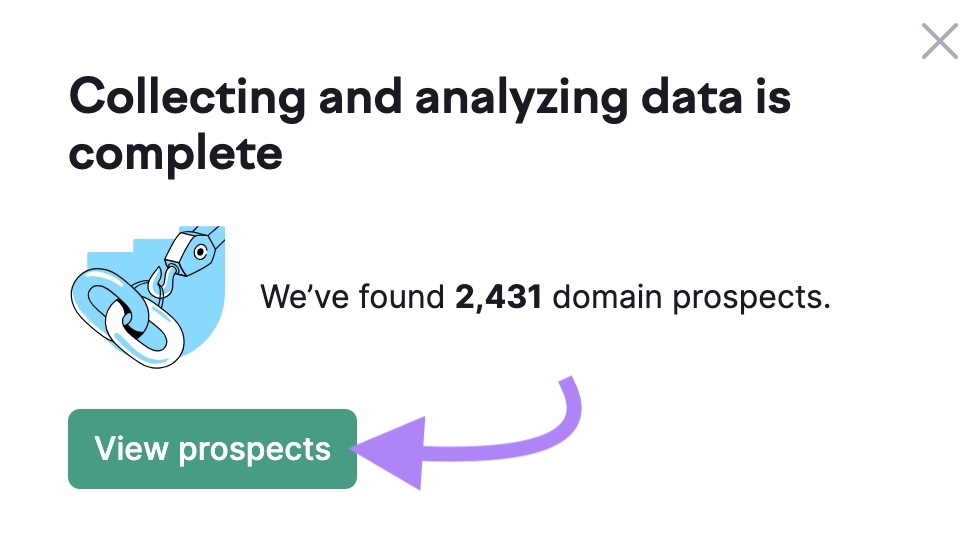
You’ll see a list of potential websites you can contact for link building.
These websites are linking to your competitors, so they may be willing to link to you as well. Especially if you’re able to suggest a relevant piece of content they’re audience is likely to find valuable.
Check the boxes next to prospects you’re interested in and click “To In Progress” to add them to your outreach list.
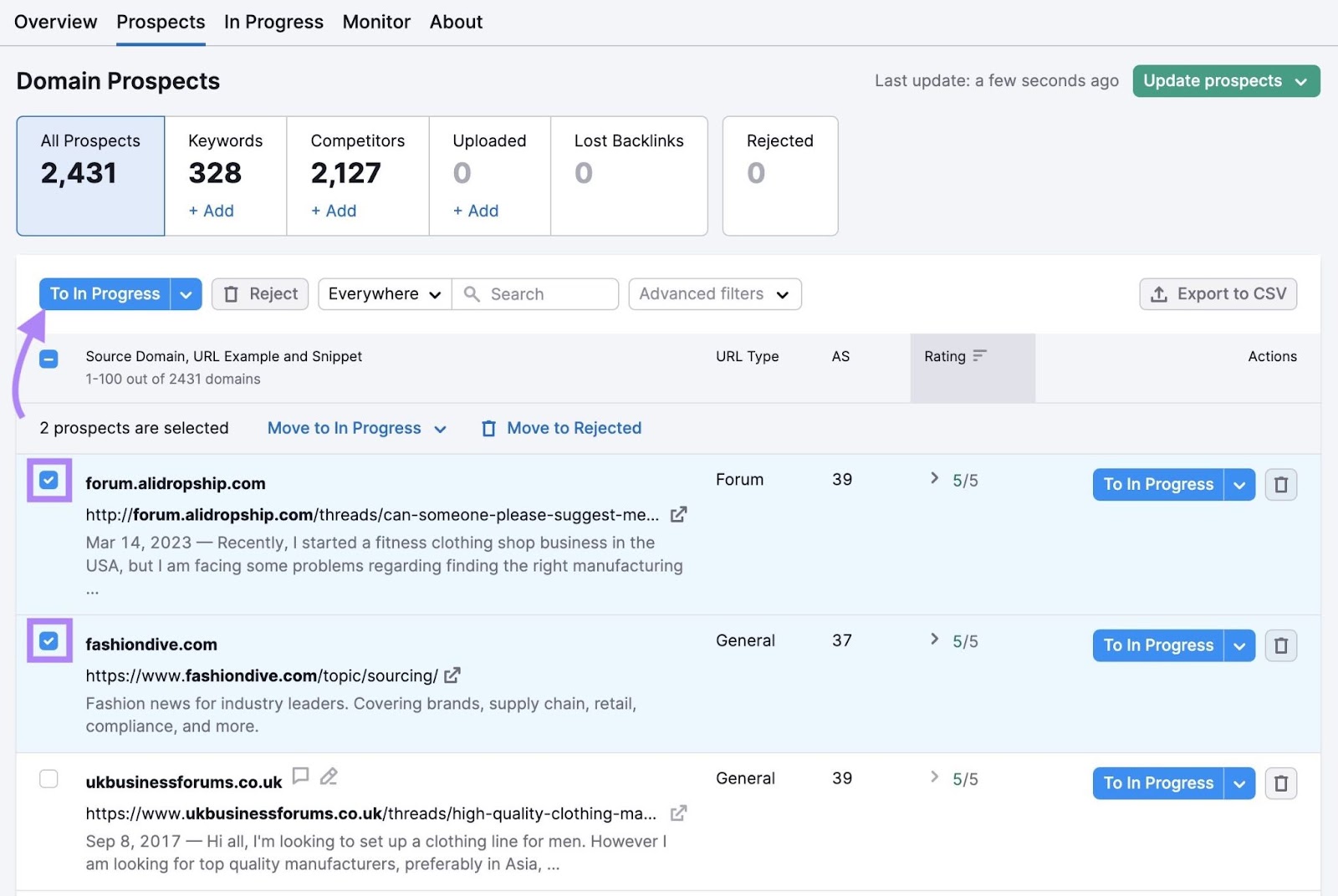
Under the “In Progress” tab, you can find contact information for your outreach targets. Click “Contact” to reach out directly from the tool.
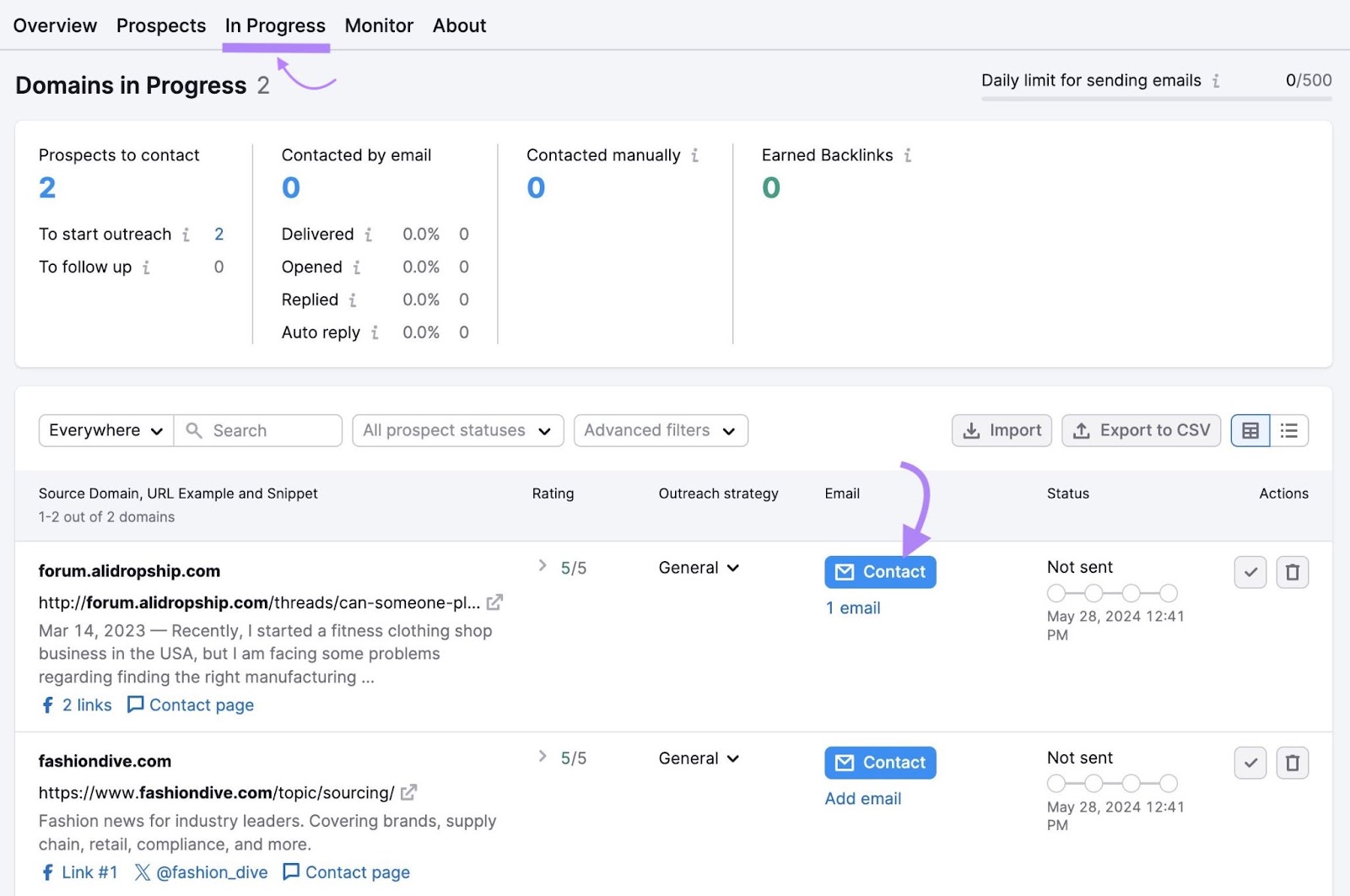
Then, craft your pitch and send the message right from the tool.
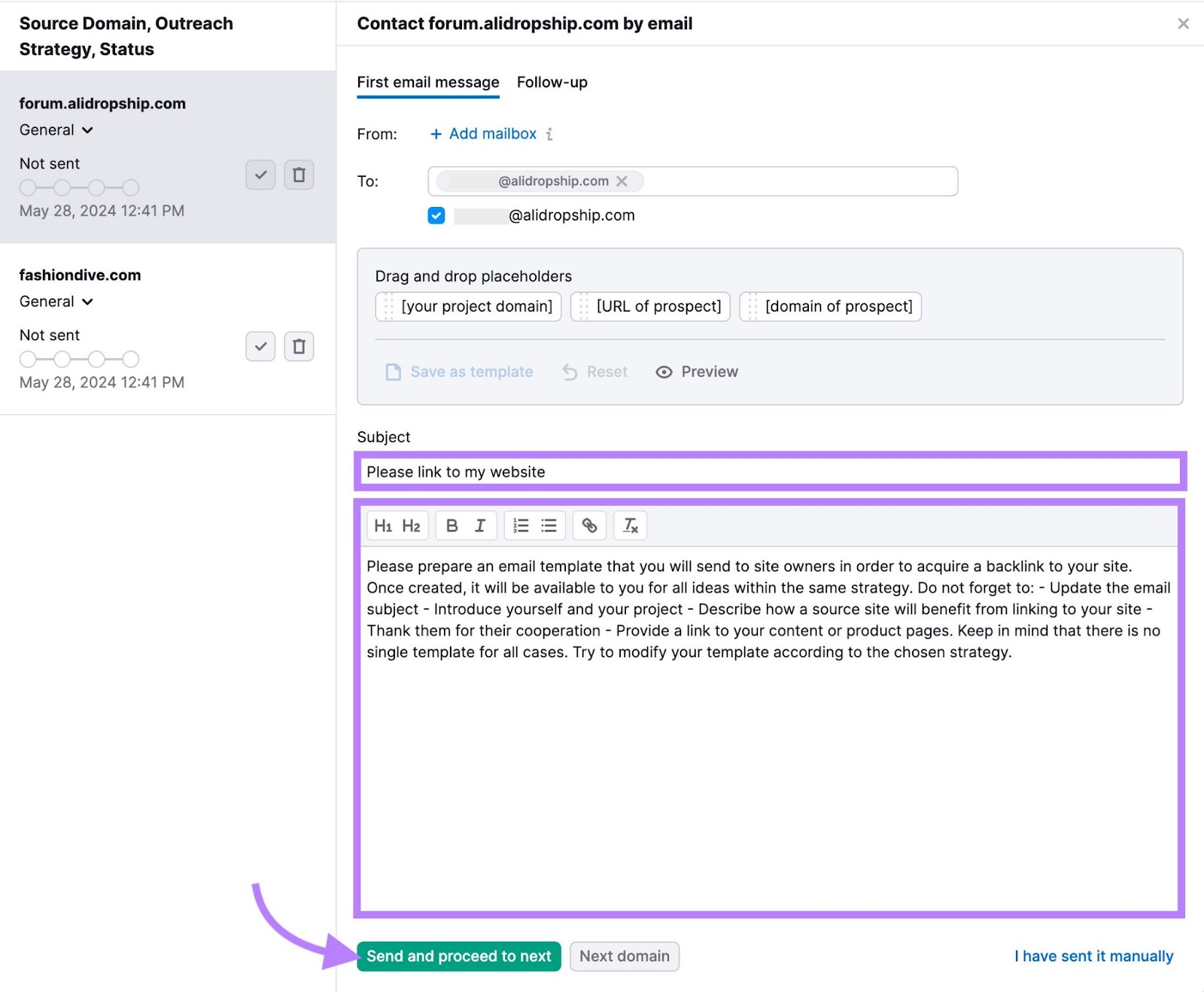
When writing pitches for link building, follow these tips:
- Introduce your website and why you’re reaching out
- Suggest a useful piece of content on your website that the website could link to
- Describe how the content will bring value to their audience
Further reading: How to Get Backlinks: 10 Strategies That Work
8. Increase Local Visibility
Local SEO is the process of optimizing your webpages to appear in local search results. Like “metal fabricators denver” or “plastic manufacturer new york city.”
It can also help you appear in the Google Map Pack when users search for products or services in their areas.
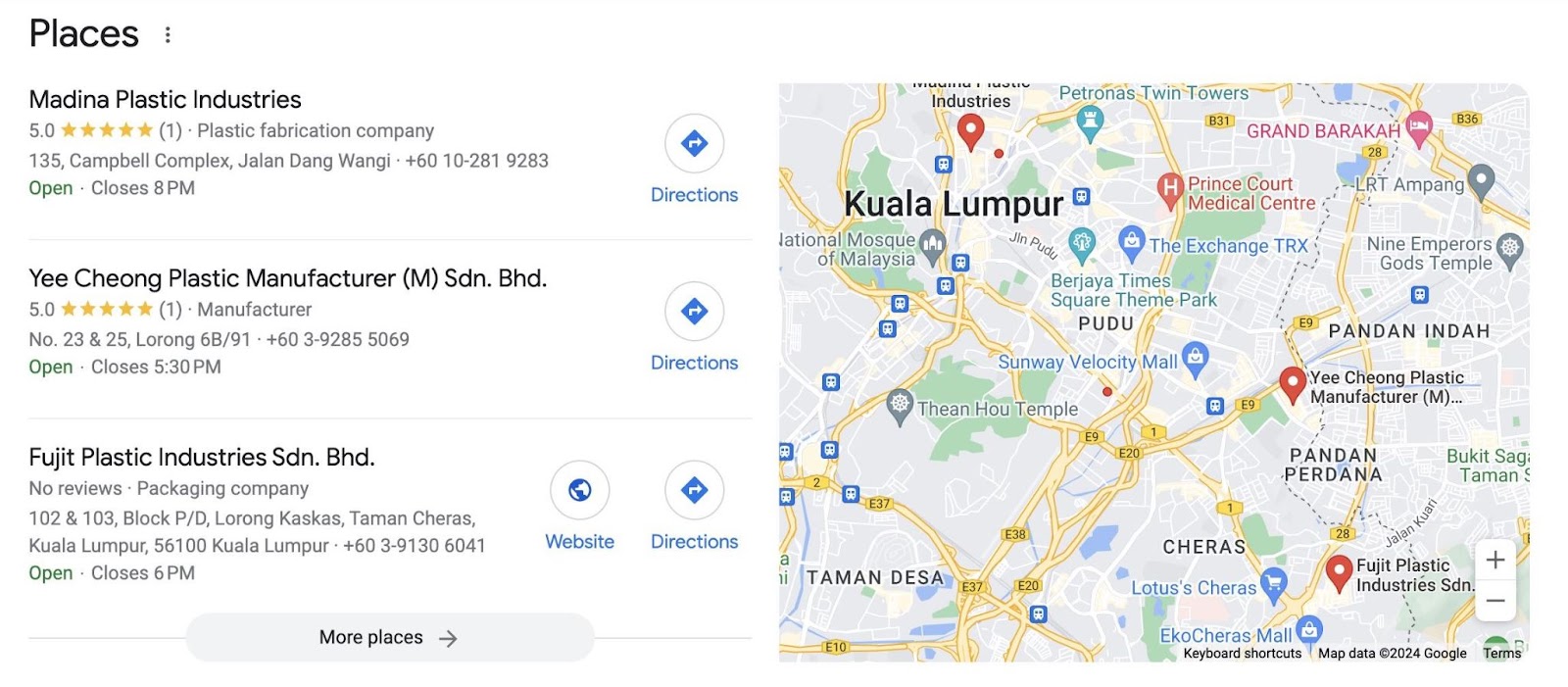
Optimizing for local SEO involves several techniques:
- Creating and optimizing your Google Business Profile
- Including your physical address on individual pages you want to rank for local searches
- Getting citations in relevant business directories (Yelp, Angie’s List, etc.)
9. Track Your Progress
It’s important to track the impact of your SEO. So you can analyze what works and adjust your approach to deliver better results.
Google Search Console is a free platform that tracks key SEO-related data about your website. Such as:
- Organic clicks: The number of searchers who click on your SERP results
- Organic impressions: The number of times your SERP results are shown to users
- Click-through rate: The percentage of users who see your result and click through to your website
- Average ranking position: The average ranking position where your results appear
Anduse Position Tracking to monitor performance for your most important keywords.
Start by entering your domain into the text box. Then, click “Set up tracking.”
Configure your settings and click “Start Tracking.”
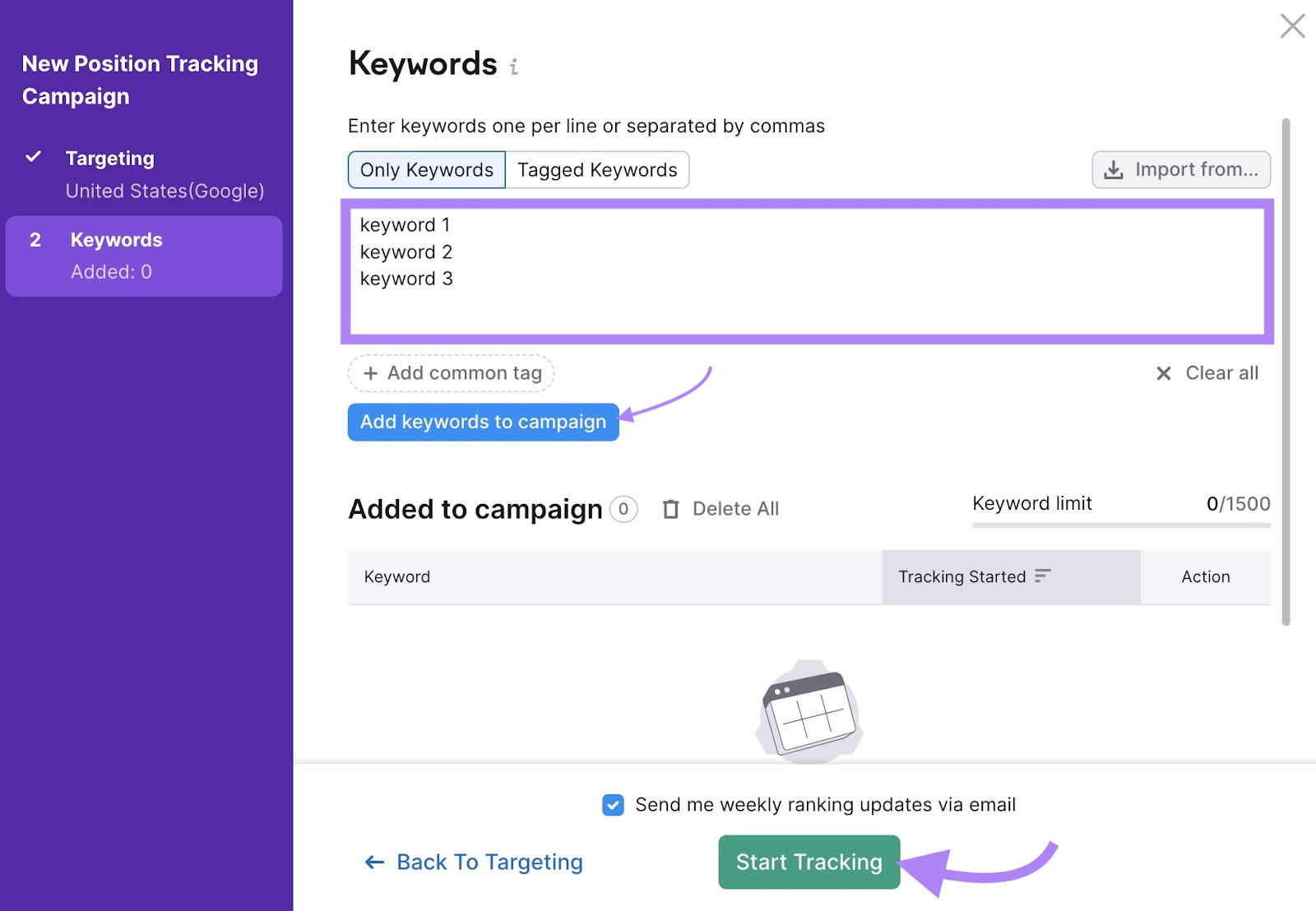
Position Tracking will start tracking your ranking positions for the keywords you added. And send you weekly alerts notifying you of any changes.
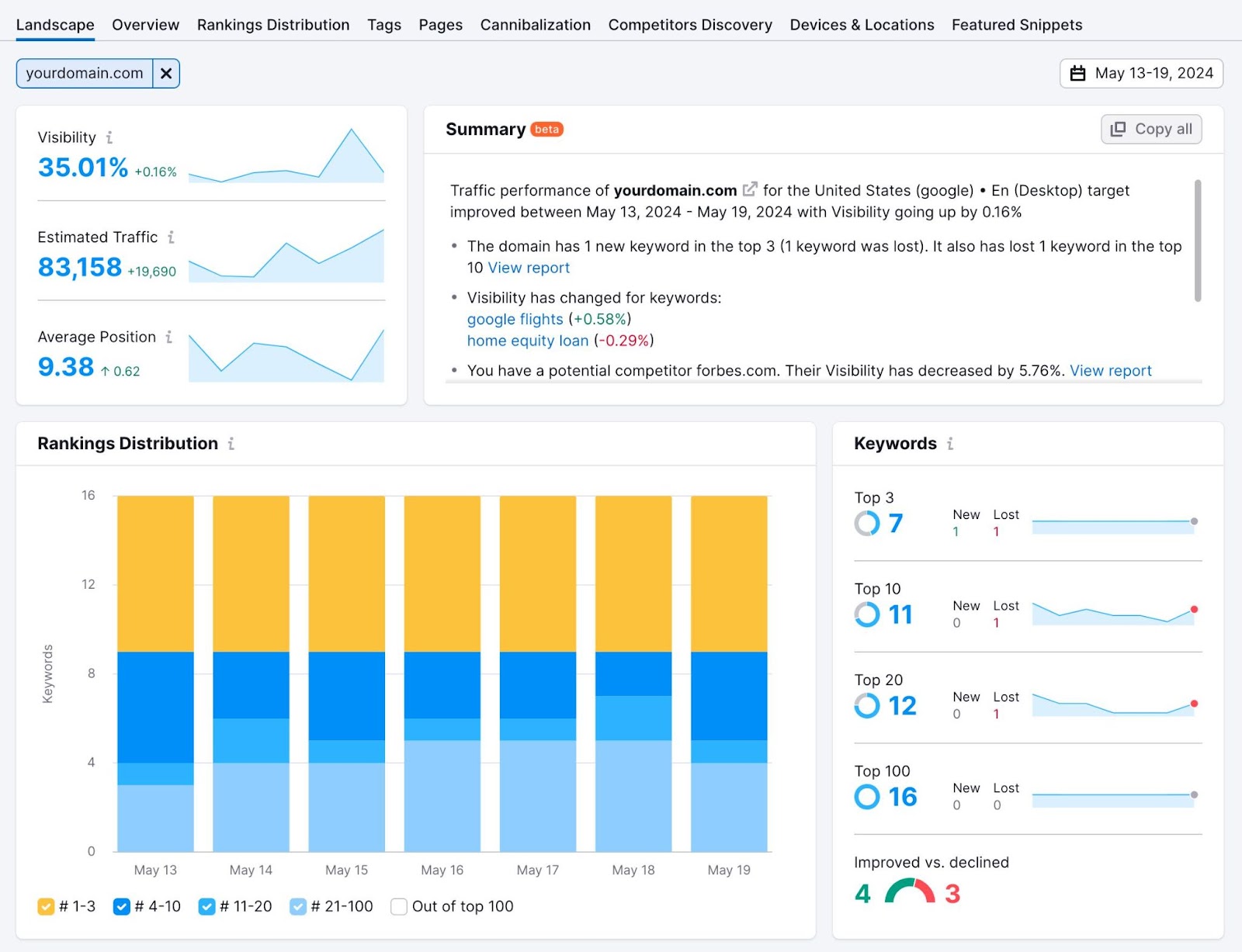
All these key performance indicators (KPIs) can help you determine what content is most effective. And which keywords are helping you reach your target audience.
Optimize Your Manufacturing Site
SEO for manufacturers is most effective when you use tools that simplify the processes.
A toolkit like Semrush can help you perform all of your SEO research and content tasks in one centralized location.
Sign up for a free trial to get started.
Source link : Semrush.com
